
Table of Contents
EDITOR'S NOTE
Gearing up for T20 World Cup
Khalid Mohidin
Founder and Editor - Cricket Fanatics Magazine
Lights, Camera, Action!
The T20 World Cup is here, and what better time to lift us than now, with the vaccination programs in full swing and fans being allowed to support their sides in the stadiums once again.
The current group of Proteas are aiming to rewrite history by becoming the first team to lift an ICC World Cup trophy. The preparation is now over and it's time to perform.
But as time passes by, the game continues to evolve. The T20 game is changing faster than any other format.
Preparation and planning have become such a vital part of every player's game and now more than ever, specialists continue to rise in this fast-paced format.
In this issue, we will be discussing what it takes to prepare for a T20 World Cup. We zone in on South Africa's chances in the T20 World Cup and how they prepared for the tournament. We interview players, in and out of the camp, coaches who have worked with some of the best T20 players and journalists who have covered the Proteas' journey until this point.
So sit back, grab a beverage and a snack, and enjoy issue 16 of Cricket Fanatics Magazine.

BECOME A PATRON
By Khalid Mohidin
Hey, guys! Welcome to Cricket Fanatics Magazine. I would like to welcome you to the first and only fan-driven Cricket publication in South Africa.
I started this venture on 1 July 2019 with a vision to get fans from all walks of life engaged with the game and the personalities in cricket.
We want to tell the untold stories of South African cricket and we want fans to be heard.
Since we started, we covered the Mzansi Super League, Women’s Super League, Proteas Men and Women International Test, ODI and T20I series, as well as school and club cricket, with the aim of providing entertaining, engaging and educational content.
But hasn’t stopped there.
We started a Monthly Magazine where we provide multi-media content, including exclusive features, opinion pieces and analysis.
This works hand-in-hand with our YouTube channel where we produce unique cricket shows that allow fans to call in and have their say.
We have the Daily Show, which reveals all the major talking points in South African cricket.The Sunday Podcast Show where we sit back, relax and engage with the live chat, answering all the questions fans have about us and the game.
We have Off-Side Maidens, the first ever All-Women’s Cricket Show on YouTube, which helps empower women in cricket and gives them a place to share their own views on not only women’s cricket but all cricket.
We have a Legends show, where we interview all legends in cricket.
To produce all of this, we’ve invested a lot of money, time and effort to bring this to you for free.
But to keep this going we need your help. So we have opened a Patreon account.
Today, we are fortunate that technology has enabled anyone to become a patron of creative work, even if they are not a billionaire.
We have therefore launched a campaign for you as a Cricket Fan to become a patron and support us as an independent, bootstrapped publisher.
As a Patron, you also get your voice heard as a Fan.
Plus: You have the opportunity to become more engaged with the content we produce.
Every month we produce at least:
- 60 Website Articles
- 20 Daily Video Shows
- 4 Weekly Podcasts
- Match Previews
- Match Reviews
- Video Interviews
- And more…
So please join our Patreon campaign today.

The Proteas Will Bring Energy and Passion
By Khalid Mohidin
Energy and Passion. These are the two highlighted attributes that the Proteas have running through their veins heading into this T20 World Cup tournament.
Yes, strategy, tactics, style of play, skill and technique are all obvious components of the game, but it’s usually always a final sprinkle of intangible ingredients that separates the best from the rest – something extra that takes a team over the line.
History hasn’t favoured the Proteas in previous World Cup campaigns.
Despite fielding teams filled with superstar names and going into tournaments ranked in the top tier, they always came up short.
World Cup heartbreak has always been part and parcel of being a Proteas fan.
Out of the 18 squad members, including 3 reserves, Only 8 players have experienced the ghosts of World Cups past – Rassie van der Dussen, Lungi Ngidi, Quinton de Kock, Kagiso Rabada, David Miller, Andile Phehlukwayo, Aiden Markram and Pretorius – while the rest are new to the pressures of a major tournament.
Do we dare to think differently this time around?
My optimism was certainly revitalised when I sat down for a chat with Proteas all-rounder, Dwaine Pretorius.
“Look, I was there in 2019 and I was there in 2017 with the Champions Trophy,” said Pretorius with a determined glint in his eyes.
“There’s not a lot of guys here with World Cup experience, which obviously could be a big strength for us because there's no real baggage that we're carrying. We come into this tournament quite fresh.
“I think the biggest lesson is that we need to bring the passion and we need to bring the energy. It's as simple as that.
“With the young team that we do have – not inexperienced – if you look at our team, we don't have as many (international) matches as the England team or the West Indian team under our belt, but that brings energy and passion and if we can come out here, bring the energy, bring the passion and be smart, then we've got a great chance of competing very well in this World Cup.
“The guys are up for it and very excited. And we’re looking forward to it a lot. Not too much focus has been given to the past, but we've taken a few lessons there. Nonetheless, the past is the past. We can only worry about what’s to come day by day. We're going to take it from match to match.
“We’ve done a lot of work in terms of how we prepare for matches and our structures. We're going to keep that the same so that our mentality doesn't necessarily change. We're not hyping these games up more than any other South African game. We are very proud of playing for our country. And for us, it's just as important as every match we play. And this World Cup is no different.”
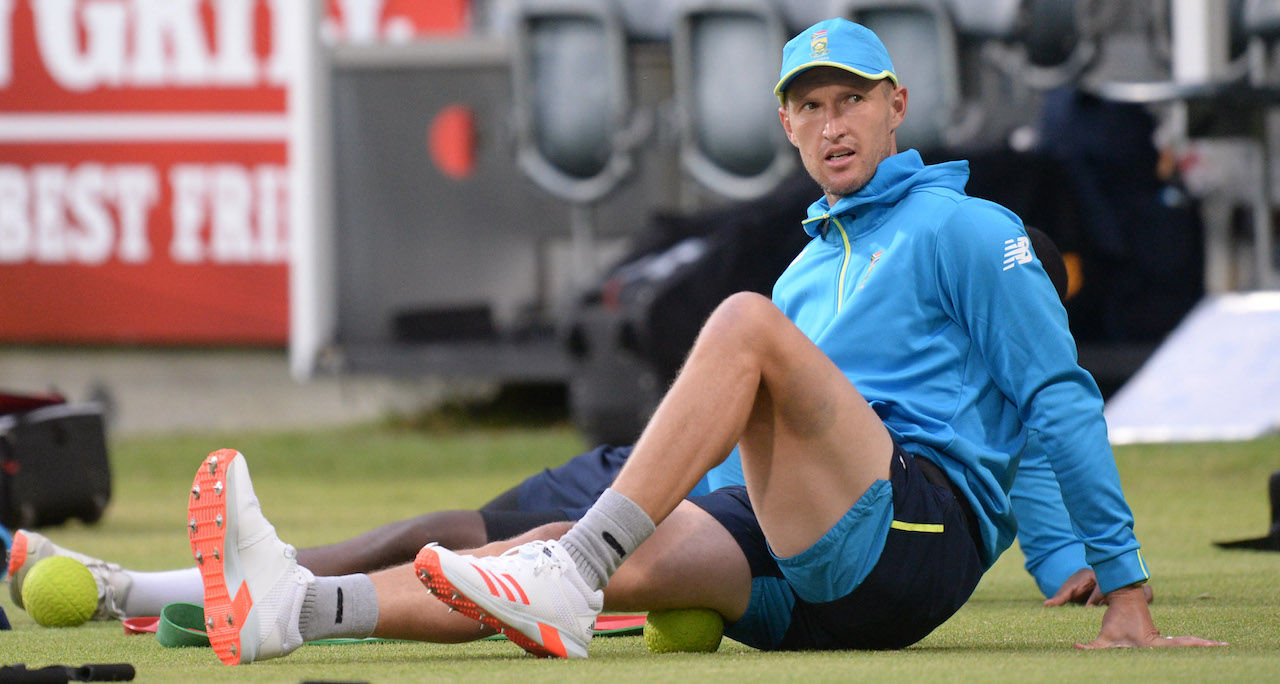
For over two years, the Proteas embarked on a journey of discovery, particularly in preparation for the T20 World Cup in the UAE.
Mark Boucher and his staff went through an experimental phase of filling the final gaping holes in their starting XI, giving new players opportunities, shuffling roles in the squad dynamic and searching for a clear team identity that included a solid style play.
Despite all of that, Pretorius’ spirits remained high whilst looking back at the preparation leading into their quarantine in the UAE.
“There were a lot of combinations tried. A lot of different bowling combinations or different batting combinations. Different guys in different positions. So I think as a coach you've got that initial experimentation period where you need to find your best players for certain conditions and I think coach Boucher went through that in what was like a building stage,” he explained.
“But I don't want to hide away. Even though we've got a young team, I think our building stage is done now. I think the players that are here will be the core of the white-ball team for quite a while. We've got a great team that I think is very well balanced with very good options in different conditions.
“I think the experimentation period is done in my opinion, and it's now time to put performances on the board. And what is nice is that we've got some sort of performances in T20 cricket behind us over the last few games that we've played in series’, so I think the guys learned a lot in the last 10 games that we've played.”
The Proteas embarked on a gruelling run of T20 tours, which put their weaknesses to the ultimate test.
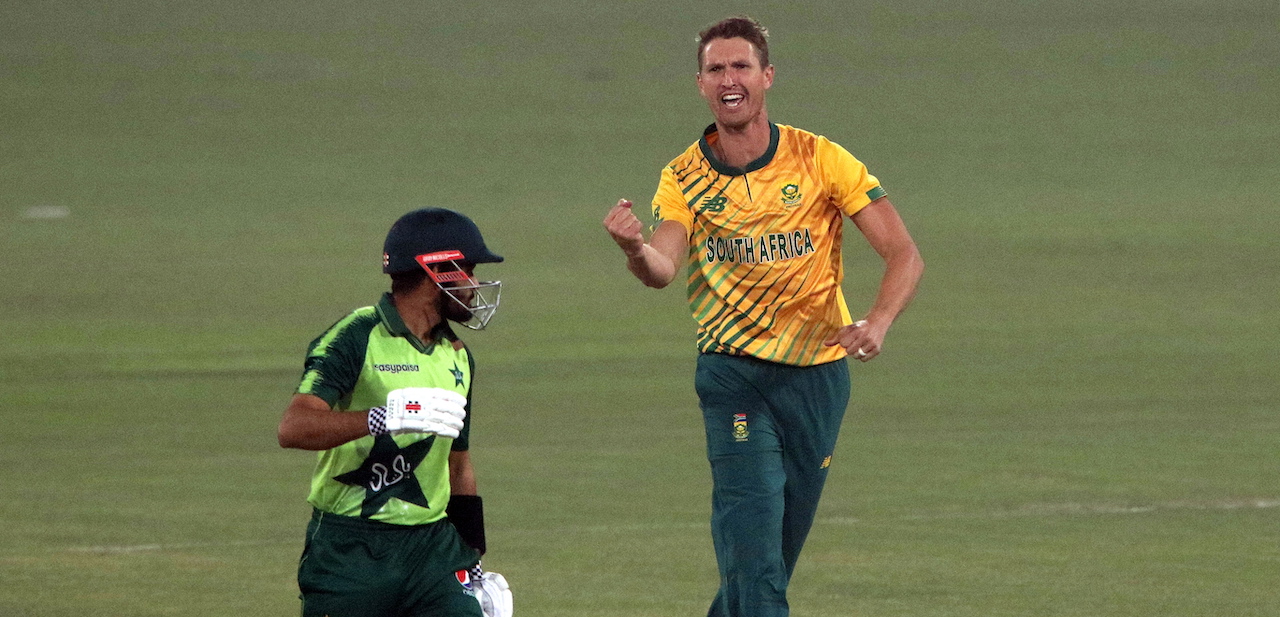
First up was a trip to Pakistan, the first in over a decade. A young South African outfit suffered a 2-1 series loss, which was a massive learning curve for Pretorius and his teammates.
“As a player individually, I think I took quite a bit out of it. As a team, it was a very young unit going to Pakistan at that stage. I think we gave a few of the senior players a rest. So it was again, very much an experimentation tour,” he recalled.
“So as a player playing in those games, I think I learned a lot from being able to adapt to certain plans, seeing where players are scoring and where they are strong. Also, making sure that we can adapt to different plans by having more than one option.
“It showed what you need if you want to play cricket at an international level – you need at least one to four plans that you can execute. It broadened my horizons in what's needed to try and perform well.
“Even though you've got all those plans it is no guarantee that you're going to perform well, but at least you've got different tools to try and combat the batters, especially from a bowling point of view.
“From a batting point of view, we thought that in Pakistan the ball might turn quite a bit. It didn't turn that much and it was just a bit slower and lower compared to South Africa.
“If you look at the IPL that happened in the UAE, it could be very much the same. Whereas in Sri Lanka the ball turned quite a bit. So you just need to be adaptable and have a lot more options than just one or two.
“I think that was the whole thing that the coaches brought in to the space is that as a batter you need to be able to try and score 360 (degrees) – you need to have options to score all around the ground.
"That is what we started doing from the first white-ball game since he [Boucher] came into the space.
“From a bowling point of view, you need to make sure that all the percentages are in your favour. I think as a unit, we've learned a lot and I think we are definitely in a much better and stronger position than we were before.”
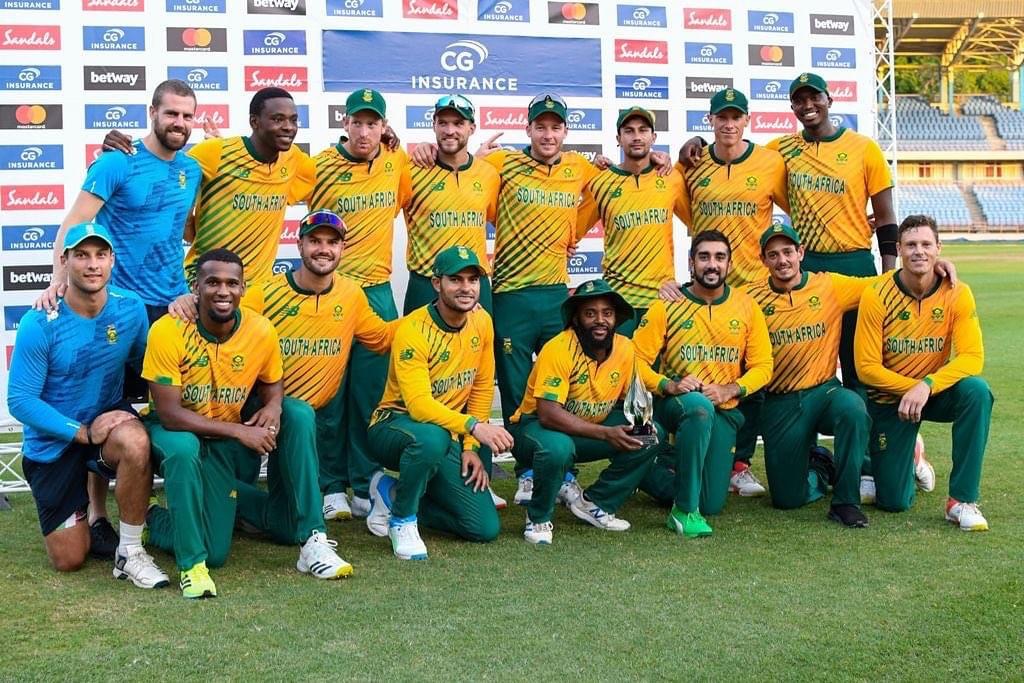
Next up was a more memorable trip to the West Indies and Ireland, and although Pretorius wasn’t part of the squad, he did receive enough insight from the players and coaches on those tours that he added to his game.
“I took learnings from all the experience that the West Indian players have and their bowling plans in their conditions. A guy like Dwayne Bravo, what does he do? He's not the fastest guy anymore, but he's very smart. So taking bits from him,” he said.
“Taking a bit from how they set up the innings’ and also obviously learning that sometimes 160 is a good score, you don't always have to go for 200.
“In T20 cricket, obviously, with England being very aggressive, everyone's trying to go that route and I think in the West Indies we've learned that there are more ways to win a T20 cricket match than just always scoring 200.
“So I think it's going to be a very interesting T20 campaign and World Cup this year. I think conditions are going to be vital and I think mind power is going to be massive.
“The guys that play the big situations the best are going to be the guys that are going to be in the top four of the World Cup groups. And I think we've learned a lot using our brains more than just our power and just being brave. I think being smart is the key.”
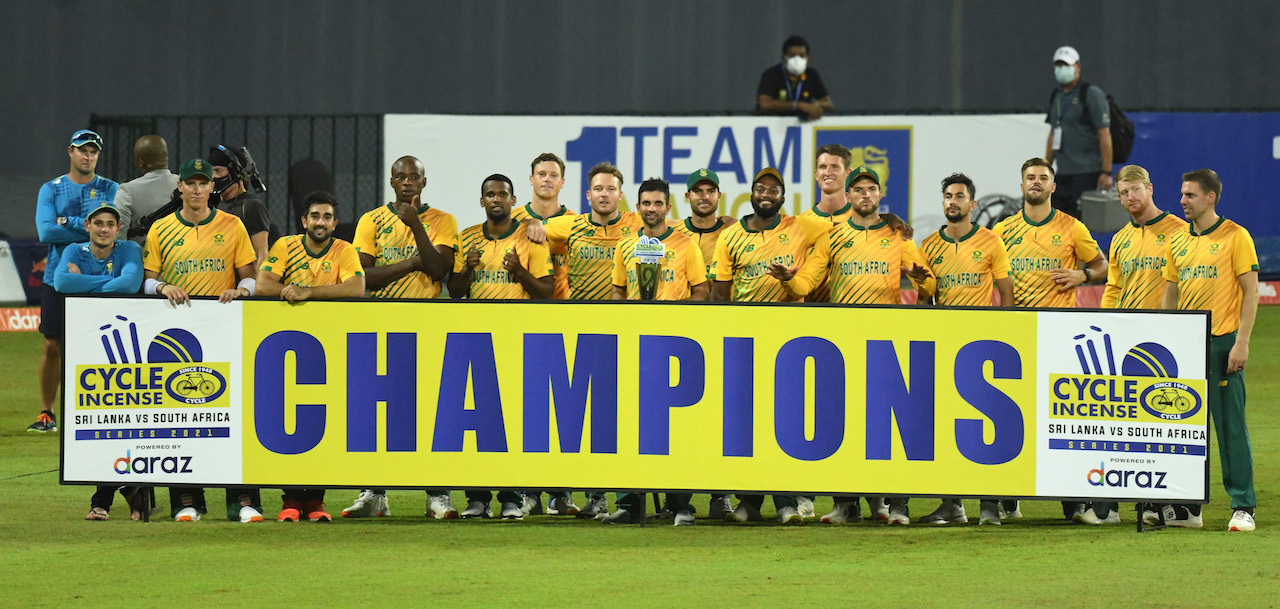
Next was a trip to Sri Lanka, which put the Proteas batters’ ability against spin to the test.
“Well, what's nice about it is you cannot get worse conditions than what we got in Sri Lanka, but it was challenging, there was a lot of turn,” Pretorius exclaimed.
“They had solid players and solid spin plans and all the work that we've been doing over the last two years on our spin game helped. And again, coach Boucher has focused on that quite a lot and trying to make sure that we've got different options against spin to prevent us from being just a one-show pony.
“So I think going to Sri Lanka and seeing how much it turned, how we coped with those conditions and what scores we could put on the board there, and with how much confidence we dealt with that, I think coming to the UAE we've said to ourselves (and that's what I've said to myself) – if we can cope so well with those conditions, even if they are that bad, we are still in a strong position.
“Sri Lanka was great preparation for us, knowing that those conditions are probably as bad as the T20 wickets can get when it comes to turn. We coped well so we got a lot of confidence out of that.”
Pretorius’ importance to the squad is undeniable. As an all-rounder, he frees up players around him and plays a vital role with both disciplines. But there are some secrets to Pretorius’ game that gives us as a fan base the indication of what we can expect from him as a player, particularly in the the T20 game.
“I've looked a lot at how Dwayne Bravo bowls, and then a mixture between how Kieron Pollard and Andre Russell bats,” said Pretorius when asked what he has learnt from the Windies superstars who are the defending T20 champions.
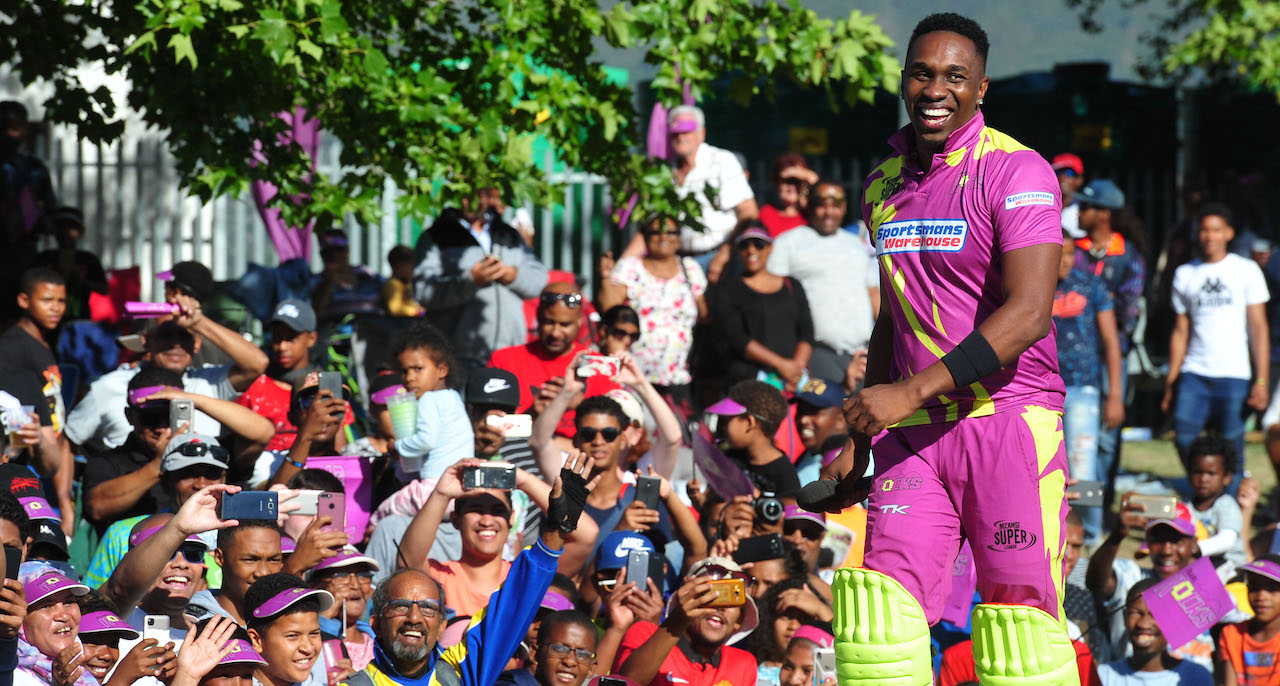
“There tends to be a pattern in terms of how Bravo bowls. He always bowls his four overs, very rarely goes for more than eight runs an over and picks up a few wickets. His plans are always spot on. He mixes up his pace, his line, his length and it always feels like he's making those batters bat to their Plan C’s and Plan D’s and not their Plan A’s. If he bowls to Kieron Pollard – he's been bowling to him for years – you can see where he bowls, you can see he’s a thinking cricketer.
“If you look at his pace profile it's slightly quicker than mine but very much the same skillset, so you can learn a lot from him in terms of bowling. You realize you don't have to be an Anrich Nortje bowling at 160 km/h to be effective in T20 cricket.
“You can be a Dwaine Pretorius bowling 125-131 km/h and still be effective in T20 cricket and still do a great job. Bravo has been doing it now for years, so you take a lot of confidence out of that because there tends to be a lot of focus on pace in terms of T20 cricket. So, I think Dwayne has paved the way for the guys that don't have that much pace to also have a career in T20 cricket.”
“When it comes to batting, if you want to be that aggressive guy, you look at a guy like Andre Russell and you look at his record, you look at the leagues that he plays. He might be playing 10 matches and he only comes off maybe two or three times in those 10 matches, but when he comes off, he wins the match. So that is something that I've taken from him," Pretorius continued.
“Kieron Pollard is a bit more measured, he gives himself a bit more time and then tries to accelerate at the back end. So for me, I want to be a mixture between the two and I want to be able to do both I want to be able to play the situation if it's needed and also be able to accelerate when that is what the team needs from me.
“If someone needs to take the game on, I want to be able to play that role and if we're in trouble I want to be able to play the role where I take it deep and finish the game off. So those three guys are the three guys that I've looked up to a lot in the T20 game because I think they're the top three in their positions. I'm sure they probably make any team as the first three names down if they are available. So yeah those are the three guys that I've learned a lot from.”
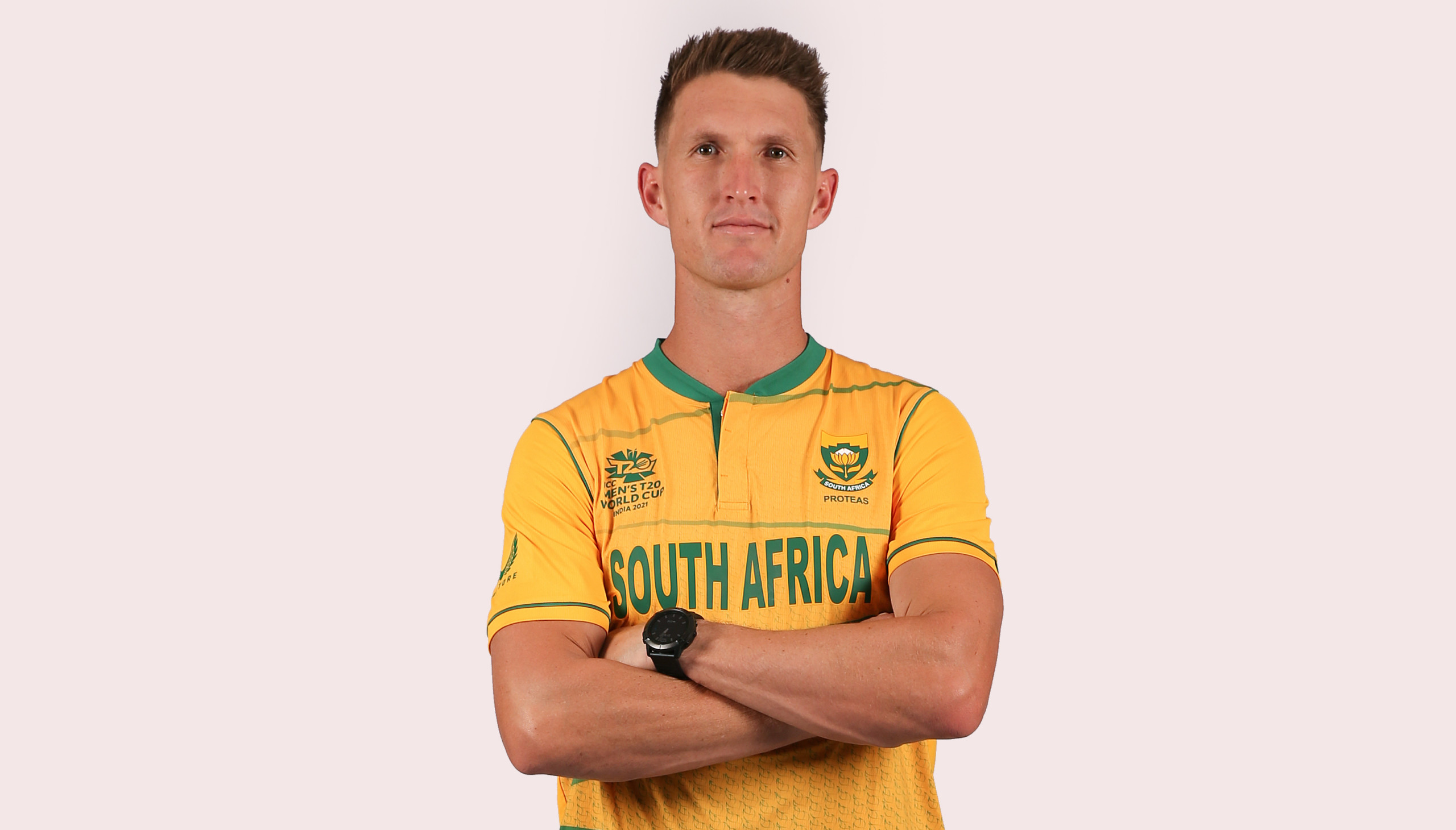
Pretorius signed off with a message to the fans.
“From my side and the team side I can't speak for them, but I spend a lot of time with them – We are 100% committed to winning this World Cup. We are going to need your support on social media and wherever it is. Keep supporting the guys. I can promise you now from our point of view, we will not leave that field without giving our 100%,” he said passionately.
“We are going to miss playing in front of our home crowds but at least we're playing in front of some crowds this World Cup - that's going to be fun.
"But to the fans, please pop us messages of support if you see a guy struggling, don’t just hate on the guy, realise that this is some serious cricket getting played against the best guys, and the biggest chance we've got to win this World Cup is with your support.
“If you want to abuse us, abuse us after the World Cup but during the World Cup please support us. Make sure that everyone knows that the country is behind us and we will do the same. When we're in there we will be playing for you. And we will be trying to make you guys proud.”
Watch the interview below for more exclusive insights from Dwaine Pretorius.
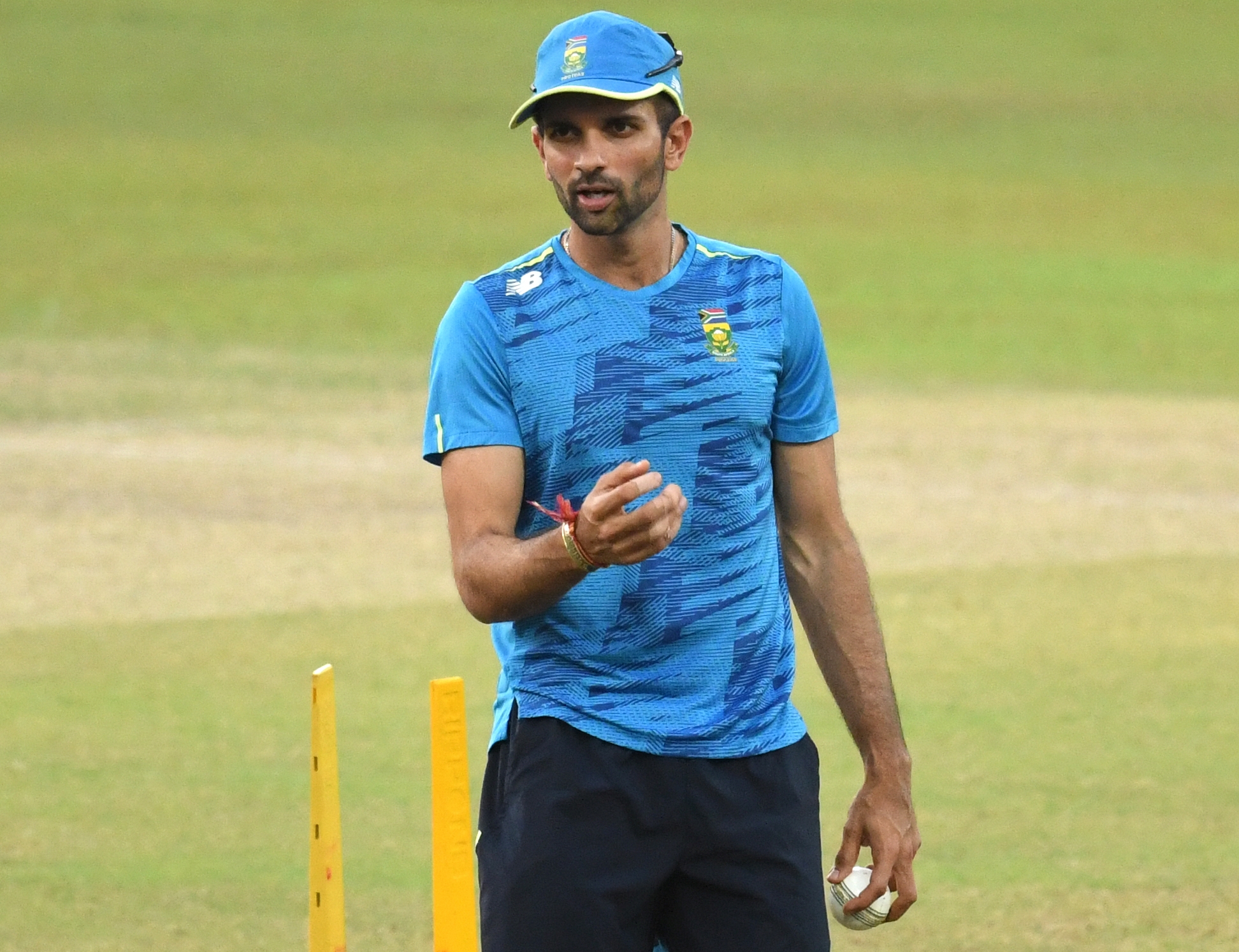
Keshav Maharaj: The Player, The Leader, The Intellectual
By Aditya Mehta
“If we have clarity in our plans and strategies, I think more often than not, we will be on the winning side of things” – Keshav Maharaj
The lead up to an ICC tournament provides a fascinating insight into the ethos of cricket teams competing for the title. Followers of South African cricket typically tread with caution during this period because of South Africa’s underwhelming record in ICC tournaments, despite playing teams that included some of the world’s greatest cricketers.
Ahead of the ICC T20 World Cup in the United Arab Emirates and Oman, the overwhelming sentiment in the South African camp appears to be that of excitement, fueled by the desire to cherish the opportunity to represent South Africa on the world stage.
South African spinner, Keshav Maharaj, making his first appearance in a World Cup, told Cricket Fanatics Magazine, “I feel like a kid with a chocolate cake in front of him.”
Cognizant of the inevitability of high-pressure moments that the team will encounter through the course of the World Cup, Maharaj hopes the team will channel its excitement and energy to win crunch moments.
“We can use our excitement to overcome those pressure moments, and be clear in what we want to achieve in terms of execution,” Maharaj said.
Since the retirement of players such as Hashim Amla, AB de Villiers, and Dale Steyn, the South African team has been striving to discover its “brand of cricket.”
Maharaj believes South Africa’s USP is that players can play an aggressive brand of cricket, but also adapt to the realities of ground conditions on the day. Series victories against the West Indies, Ireland, and Sri Lanka are testament to South Africa’s belief in their approach to T20 cricket.
“I think that’s the growth the squad has been showing so far,” stated Maharaj.
The upward curve in the team’s recent performances, in Maharaj’s view, is down to the consistent application of a process that allows South Africa to implement the brand of cricket it wants to play.
“It’s important that even if it doesn’t go well, you stick to your game plans. It’s very easy to fall into the trap where after one game or one series, you move away from your game plan and start searching for new ideas. By then it’s too late because you’ve gone 4-5 series and the results haven’t shown. We’ve been very good at that in being consistent at practice.”
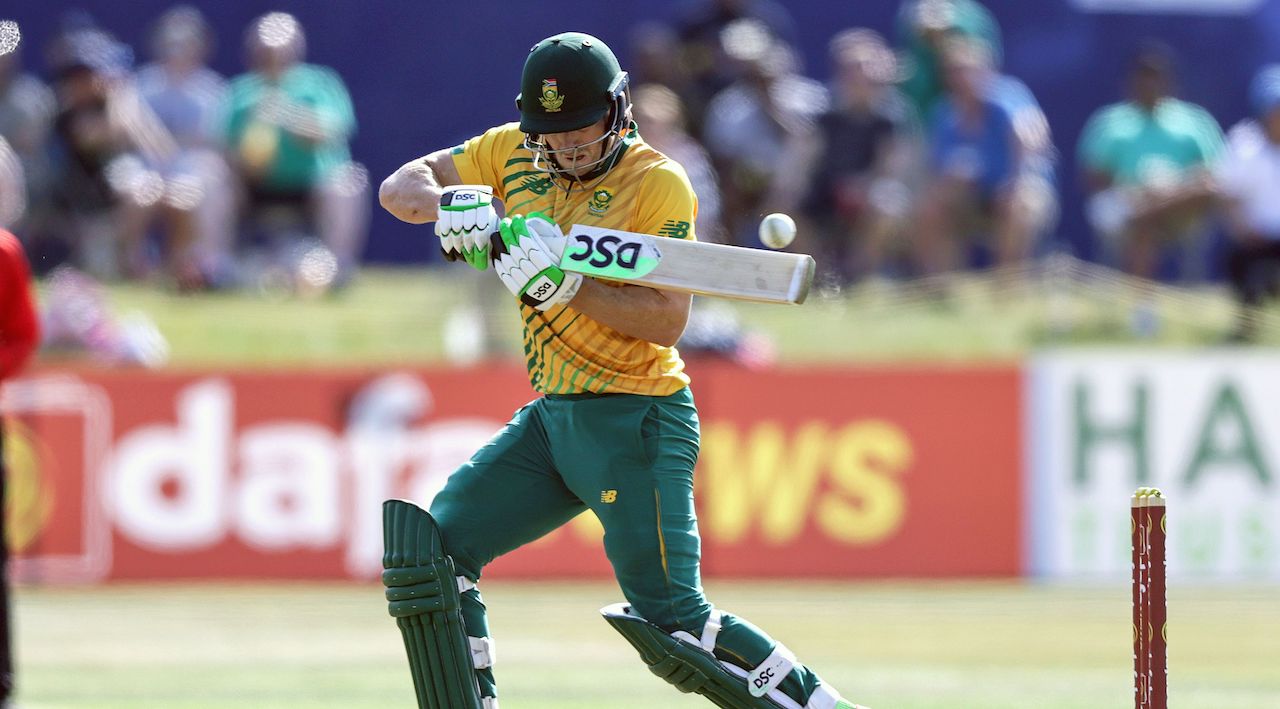
The importance ascribed to following a process aligns with how Maharaj approaches his own game. Describing himself as “someone who likes to do a lot of homework,” Maharaj’s commitment to identifying and sticking to a process has been instrumental to his success in international cricket.
In addition, Maharaj also understands the importance of trusting his instinct, which is, perhaps, one of the reasons he is widely regarded as an astute leader in domestic and international cricket.
Maharaj reflected, “I like to do my homework to identify scoring areas and strengths and weaknesses, and get a feel on the day, in terms of conditions, and what the batter is trying to do. Probably his go-to shot is over cover, but on the day, because the wicket doesn’t allow it, it might go across the line. You get a sense on the day. I always believe you can’t run a marathon if you haven’t done the mileage before that.”
Maharaj’s foray into international cricket began with a successful Test debut against Australia at the WACA in 2016. He credits Test cricket for much of his success in white-ball cricket.
“Bowling the overs in Test cricket on the international stage made me understand what I can and cannot do with the ball a lot more. Understanding my role and understanding my skill has helped a lot.”
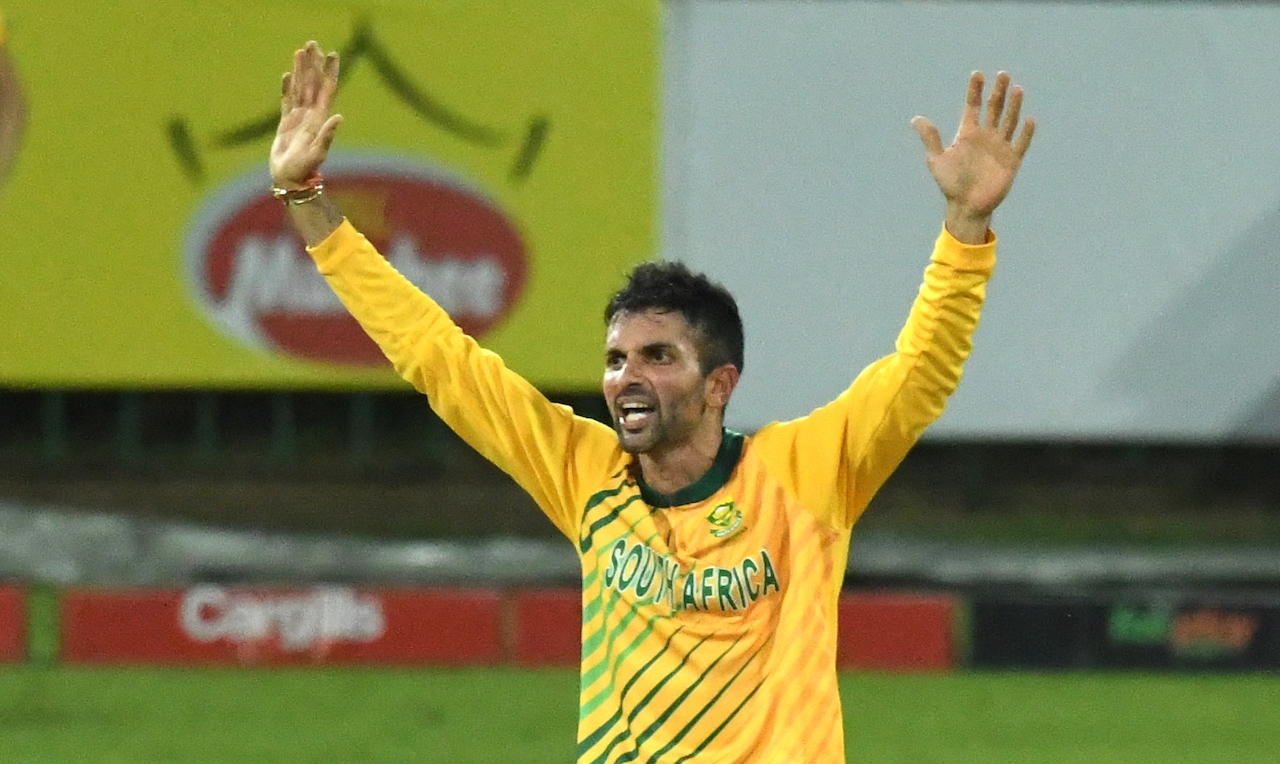
Delivering a high volume of balls is one of Maharaj’s preferred ways of elevating his skill set in all forms of the game. The hard yards that Maharaj put in with his domestic team, the Dolphins, has held him in good stead.
“I love playing for the Dolphins. Whenever you get the opportunity to play domestically, use the opportunity with both hands. I love playing domestic cricket because it’s extra game time for me. Two- it’s a chance for me to hone my skill further.”
Maharaj has also benefited from the close relationship he shares with the current coach, Imraan Khan.
“I have a very good relationship with Immi. He was my roommate when he played. We have a very good relationship, we understand each other well. We work well together and we’re more or less on the same wavelength in the way we like to approach things, the brand and style of cricket we play at the Dolphins. For me, I think my time at the Dolphins was invaluable to where my career is right now.”
Maharaj has the self-awareness to know that he may not possess as many variations as a wrist spinner but understands that the holding role he delivers for the Test team has value in T20 cricket as well.
“For me as a left-arm finger spinner, my role is to stop the number of boundaries I’m conceding, and look for one or two dot balls an over. If I’m going for four runs an over in a T20 game, at the end of the day, I would say that’s very good returns. If I go four overs for 16, if I know it’s not happening from my end, the opportunity is posed at the other end to strike. That’s the partnership you want to build as a bowling unit.”
Recent trends in T20 internationals and leagues across the world have illustrated that teams are trying to bat deep to employ an aggressive style of play. Despite the challenging nature of pitches that South Africa have played on in their last three series, the team remains committed to playing bowlers that can clear the boundary.
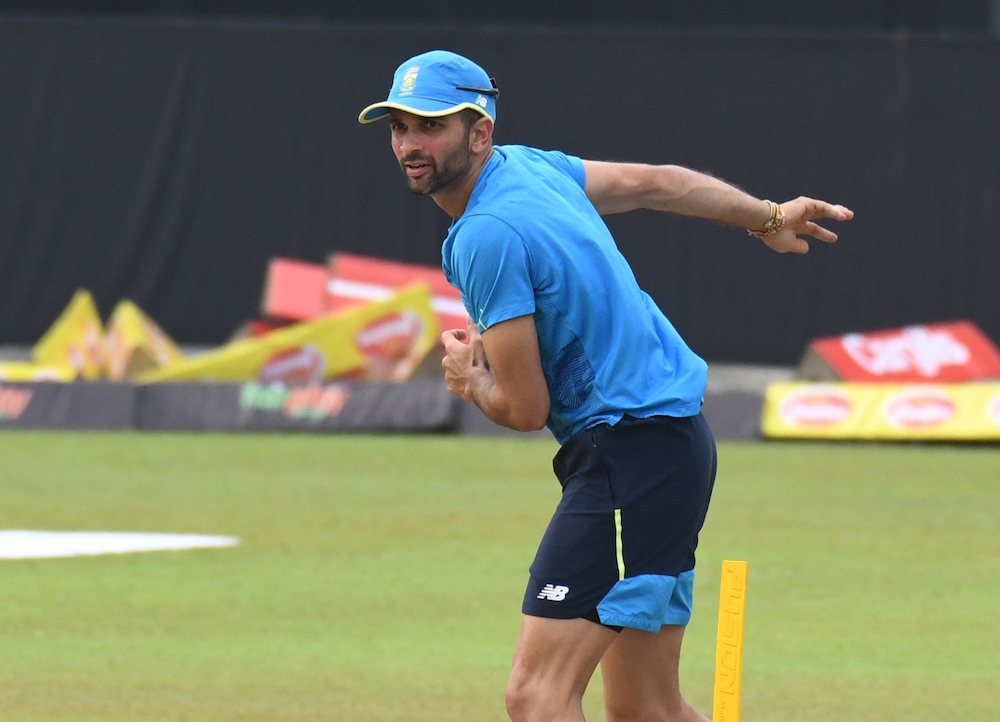
Maharaj explained, “Nowadays, in many cricket teams, it’s important to have your lower order come in and strike a few at the back end. I remember seeing a stat the other day that number 7 only faces six balls on average. Quite an alarming stat because you think the number 7 genuinely is an out-and-out batter or an all-rounder, but you don’t realize what impact those six balls can make in the outcome of the game.”
In the South African team, Maharaj is confident in the power-hitting skills of Kagiso Rabada, Bjorn Fortuin, George Linde, and Wiaan Mulder, who comprise the lower-middle order and tail of the T20 team.
A large number of players in the current South African setup are representing the national team in an ICC tournament for the first time. Although they are likely to be unfazed by the baggage carried by their predecessors, they will face the pressure of a magnitude they may not have encountered previously in their careers.
Maharaj’s approach to performing under intense pressure relies on canny cricketing logic, as well as an emphasis on understanding the person beneath the player.
“You look at moments from past series, and you identify those high-pressure moments. Build and replicate scenarios from those games. We’re always in a high-pressure environment no matter where we go.”
Maharaj continues, “That’s also where you rely on your teammates to get you through pressure moments on the field. Calm ourselves down and understand how each player deals with pressure is very crucial. Sort of man-managing each other is very crucial because you know how to bring out the best in someone. Whether it’s a tap on the back or whether it’s a drilling, people respond differently. We’re pretty good at that for now.”
South Africa start the tournament as underdogs. Given the momentum, they have gathered through series victories against the West Indies, Ireland, and Sri Lanka, they certainly have the potential to spring surprises and win the tournament, provided they demonstrate clarity under pressure.
If they follow the process that they have committed to over the last two seasons, then, as Keshav Maharaj says, “I think more often than not, we’ll be on the winning side of things.”
Get More Clients With Cricket Fanatics Magazine
Cricket Fanatics Magazine has the visibility, infrastructure, expertise and toolset to automate your marketing and branding.
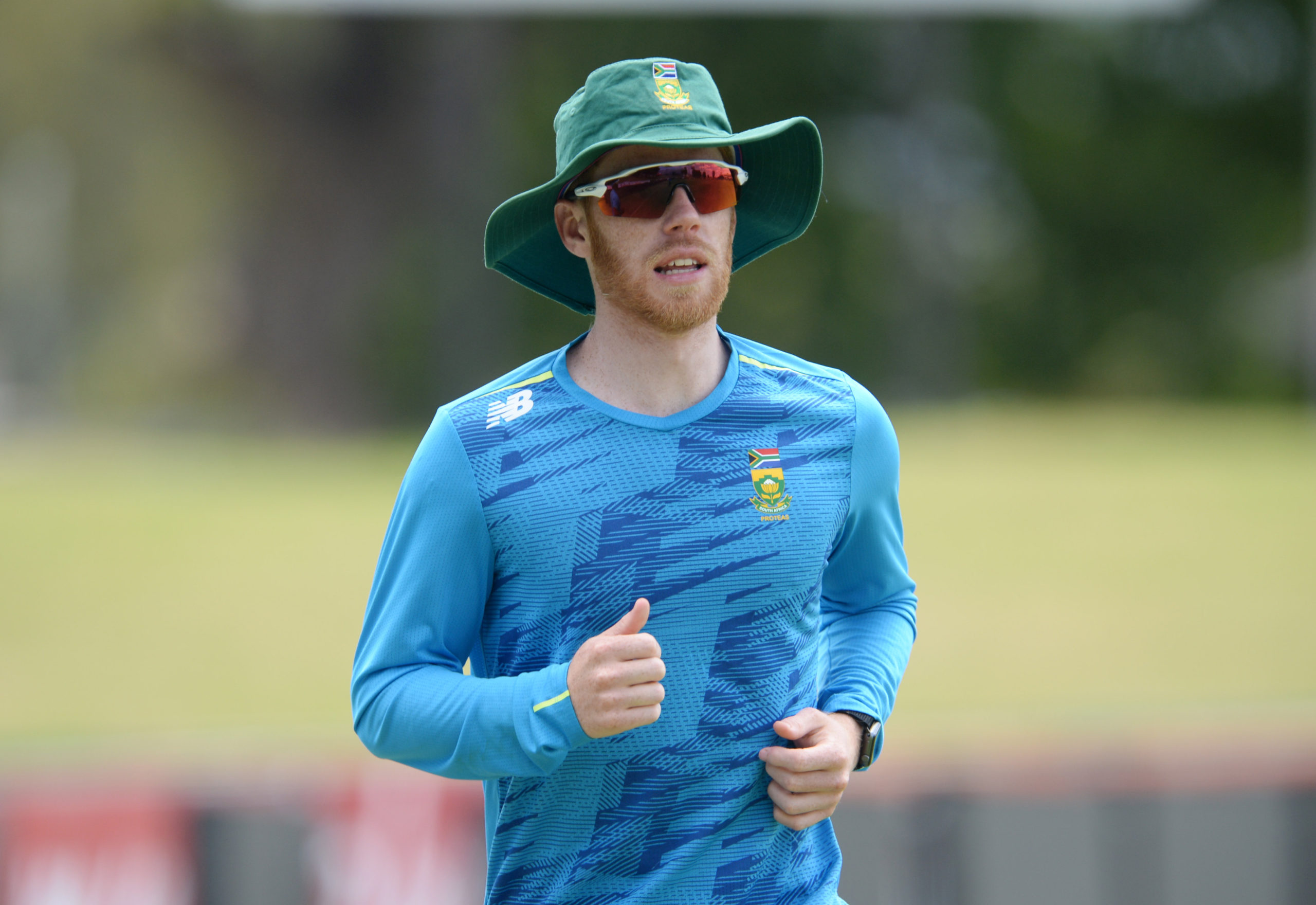
Proteas adopt a ‘fearless’ approach to T20 cricket – Kyle Verreynne
By Marc Jacobson
The Proteas have focused on adopting a sort of valiant and courageous approach to their T20 game, while acquiring the killer instinct that is needed to succeed, according to the views of renowned wicket-keeper-batsman Kyle Verreynne.
Verreynne stressed that T20 cricket, in general, has become the sort of contest where tenacity overrides longevity and that the decision-making processes thereof can be the difference between winning and losing.
This is simply because the format doesn’t allow for more variations to succeed if things start to fizzle throughout a game.
“I think many teams around the world are very focused around taking the positive options,” Verreynne told Cricket Fanatics Magazine. “If you are uncertain about two scenarios you always go for the one on the positive side.
“The brand of T20 cricket being played around the world now is one where you’ve got to be fearless and for the Proteas, from what I’ve seen and been involved in, that’s definitively an approach they’re willing to take.
“It’s no secret that to win T20 cricket you’ve got to hit a lot of boundaries, take those exceptional catches and go for wickets.”
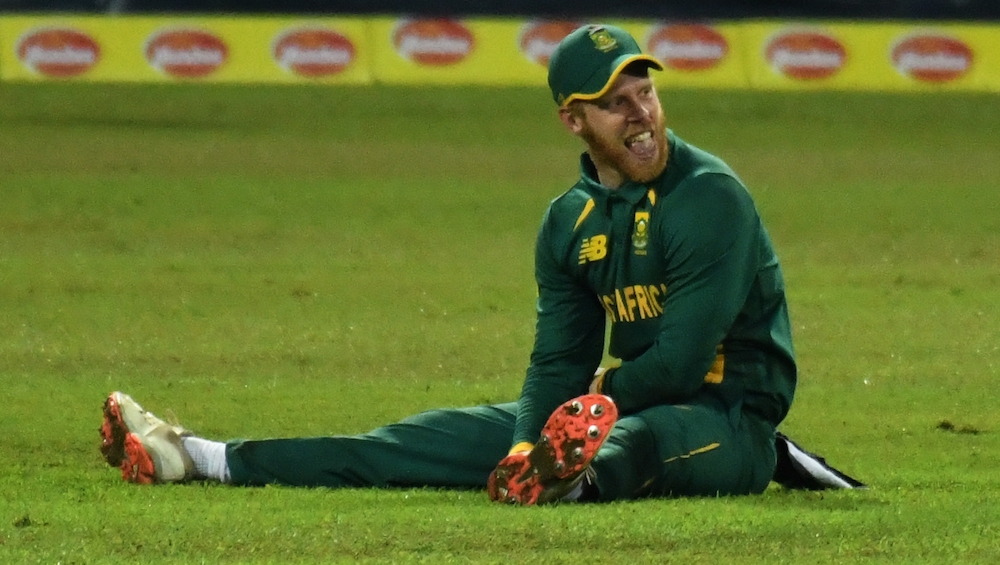
Gaining apprehension of different situations, while instinctively acting upon these scenarios, is a value that is righteously instilled from within the Proteas set-up, Verreynne added.
“There’s been a lot of focus on game awareness and making sure you understand the situation,” he said while likening this approach to that of Western Province, which strives to assess the conditions and take the necessary actions where needed.
Verreynne, who’s played two Tests and eight ODIs for the Proteas, the last of which was against Sri Lanka in September, said one of the lessons coach Mark Boucher aims to implement is to “be smart”.
“It is about making sure your game awareness is up,” he said. “Something that I’ve learnt from him is that he’s quite big on understanding the situations and making sure your plans are in place.
“In terms of setting a total, it’s about where you want to be at certain overs, and if you’re chasing, how much you want to let the run-rate get to before you start taking it on.
“That’s something I’ve picked up from him and it’s something he will be driving with the T20 guys – that they’re aware of the situations and they know the targets they need to reach.”

With the World Cup taking place in the UAE and Oman, the wickets tend to be heavier, slower and generally turn more. This is one of the reasons why the selections trust opted for a core group of spinning options.
Verreynne hinted that the Proteas would be ready for such impositions, especially on the back of their 3-0 T20 whitewash over Sri Lanka, which, according to him, had “pretty slow” wickets.
“I was there for the one-days and I would say those wickets were pretty similar to what they’ll get at the World Cup,” the former Wynberg Boys High graduate said.
“I think they’ve had good preparation and they should know what to do to be successful. Regarding their game-plan and approach, they’ve picked quite a bit of spinners and all-rounders so they have the guys who’ll suit the conditions.”
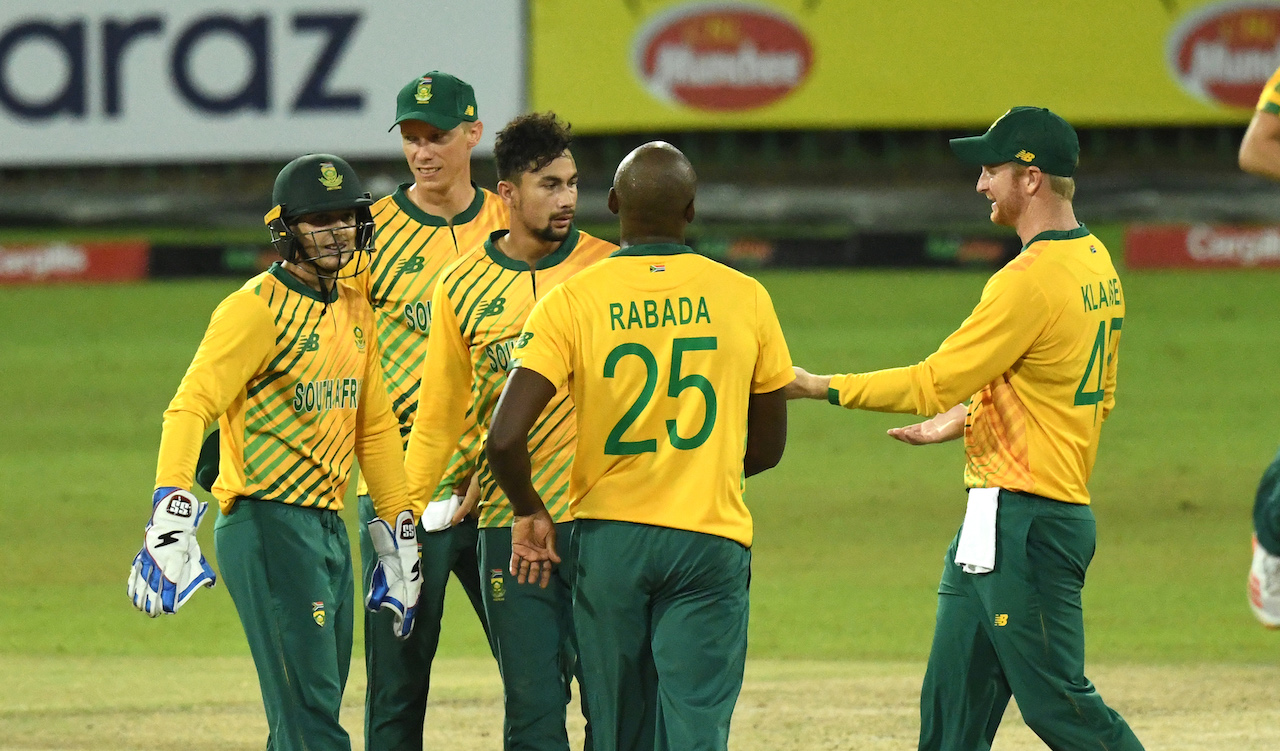
Verreynne also said the Proteas can build on their current run of form in T20s, which includes a seven-match winning streak that started with the West Indies and was extended with the two 3-0 series whitewashes over both Ireland and Sri Lanka.
“The Proteas have been playing some seriously good T20 cricket, starting against the West Indies; they’ve been exceptional.
“I think it’s going to be an exciting World Cup, but I think they have what it takes, specifically in those conditions.”
The 24-year-old said he hoped to see spinning all-rounder George Linde in the starting mix, but he’s serving as a travelling reserve.
Another player he’s excited to see stamp his authority at the world showpiece is Tabraiz Shamsi, the world No 1 T20 bowler currently.
“Everyone’s expecting those conditions to favour spin and slow bowling so I think he’s someone who’ll have a massive impact. He’s one guy I’m quite keen to watch.
“From a batting point-of-view, you’ve got to look at Quinny (Quinton de Kock). If he can come off at the top of the order with one of the middle-order guys like Aiden [Markram], Miller or Klaasen it can get quite exciting.”
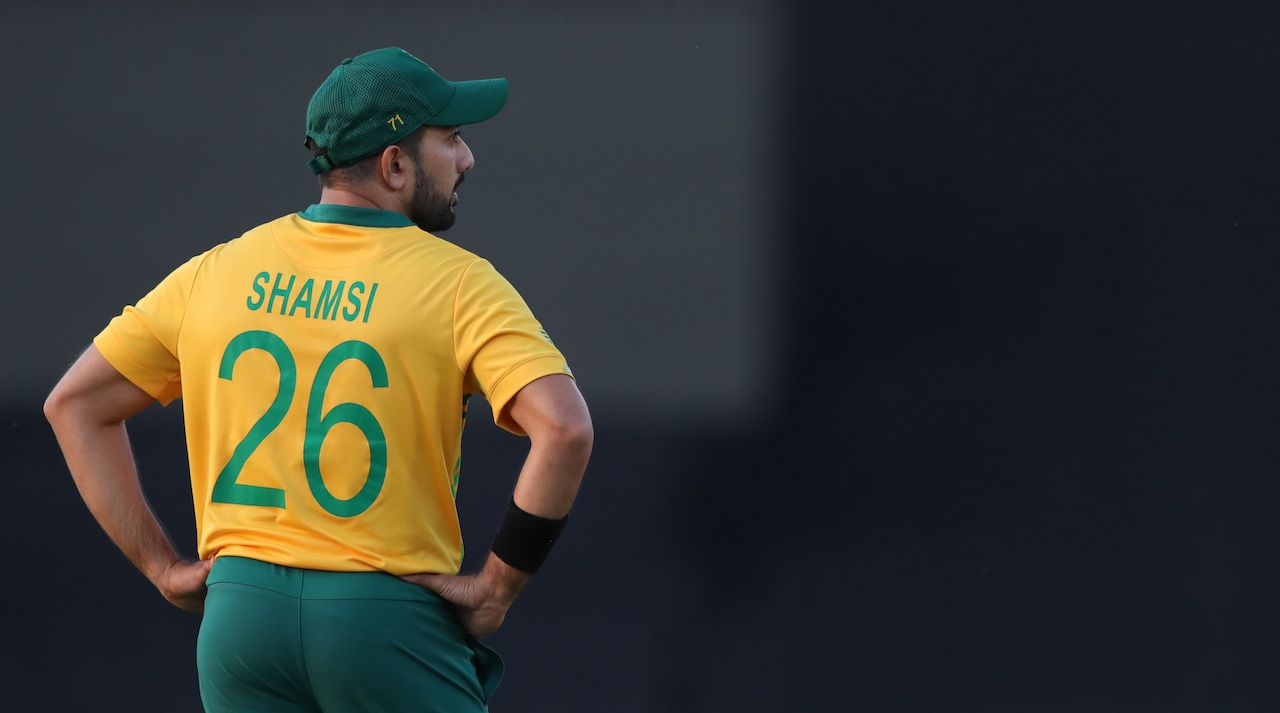
Although acknowledging that there are the “one or two” favourites for the World Cup, of which he mentioned England and India, Verreynne said you cannot outrightly “rule anyone out”.
“I do feel that all the teams have an outside chance,” he said. “I think it’s going to be quite exciting and I think with the conditions it will cause a lot of close contests which brings each team into it.
“I think there are eight to 10 teams there that can cause upsets and go on to win it.”
Regarding the Proteas, Verreynne felt their form in T20s could stand them in good stead.
“I think the Proteas have a good recipe at the moment and they’ve got a good bunch of guys. They are playing well and everything is sort of lining up nicely for them.
“The conditions play into our favour in the sense that we’ve got world-class spinners in our side and we’ve got a good balance of all-rounders.
“I don’t think we’re favourites, but I do think we’re in with a good chance. It’ll be more about the soft skills off the field and taking care of the small things. If they can get that right then I don’t see why they won’t be in with a shout.”
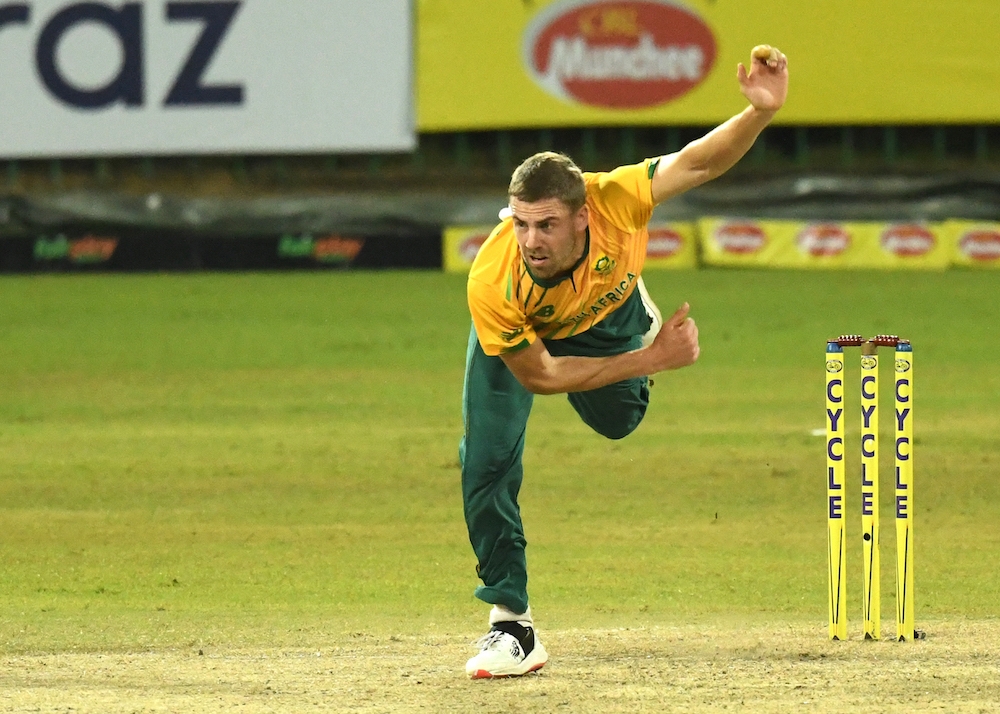
Pace in the UAE
By Chris Chiwanza
T20 cricket has been changing over the past few years. The language around how players approach the format has been changing, separating it from the other two formats. The intensity is higher and everyone is looking to get an edge. Batters are talking about swing mechanics. They are borrowing ideas and terminology from sports like golf and baseball, for example, they are obsessing on how to get an extra 10% or 20% with their swing plane...
Bowlers have not been sitting back, watching with arms folded. Over the past five to seven years they have been evolving their craft to stay competitive in a format that has been widely viewed as a batter's format.
According to Piet Botha, who has worked with Anrich Nortje since 2016, "Initially, it was just about getting the yorker right and bowl the odd slower ball - by just rolling fingers over it - and getting the field setting in place."
Yorkers, whether wide or directed at the stumps, have become more precise, more accurate, and bowlers are reacting quicker, changing their line and length at the last moment, depending on the movement of the batter. Bouncers have become an integral part of any pacer's arsenal.
Bowlers have looked to their cousins in baseball and developed their own variations, the knuckleball, over spin the ball to get it to dip on the batter and radically change the pace of the ball without necessarily changing arm speed.
Where batters are using heavier bats in training to develop strength, bowlers are using heavier and lighter balls to develop good and consistent arm speed.
"Heavier and lighter balls work as a form of weight training," says Botha.
"We also use elastic bands and medicine balls to help them develop more explosive power."
They are doing more single-leg Romanian deadlifts, planking and other forms of weight training. Physical endurance training, sprint work and resistance training are more intense. The format might be shorter, but it has extreme demands on bowlers, and the goal is to help them retain focus and keep going for longer.
Pacers are now much stronger than they were a few years ago, and with that strength comes more pace, consistently over extended periods.
Look at Anrich Nortje, he bowled the top 8 fastest deliveries in the second half of the IPL. In one match he bowled a blistering over that had the following speeds: 148.2 km/h, 145 km/h, 147.5 km/h, 150.8 km/h, 151.2 km/h, and 147.1 km/h. Not just that, he has been consistently fast, even in suffocating conditions.
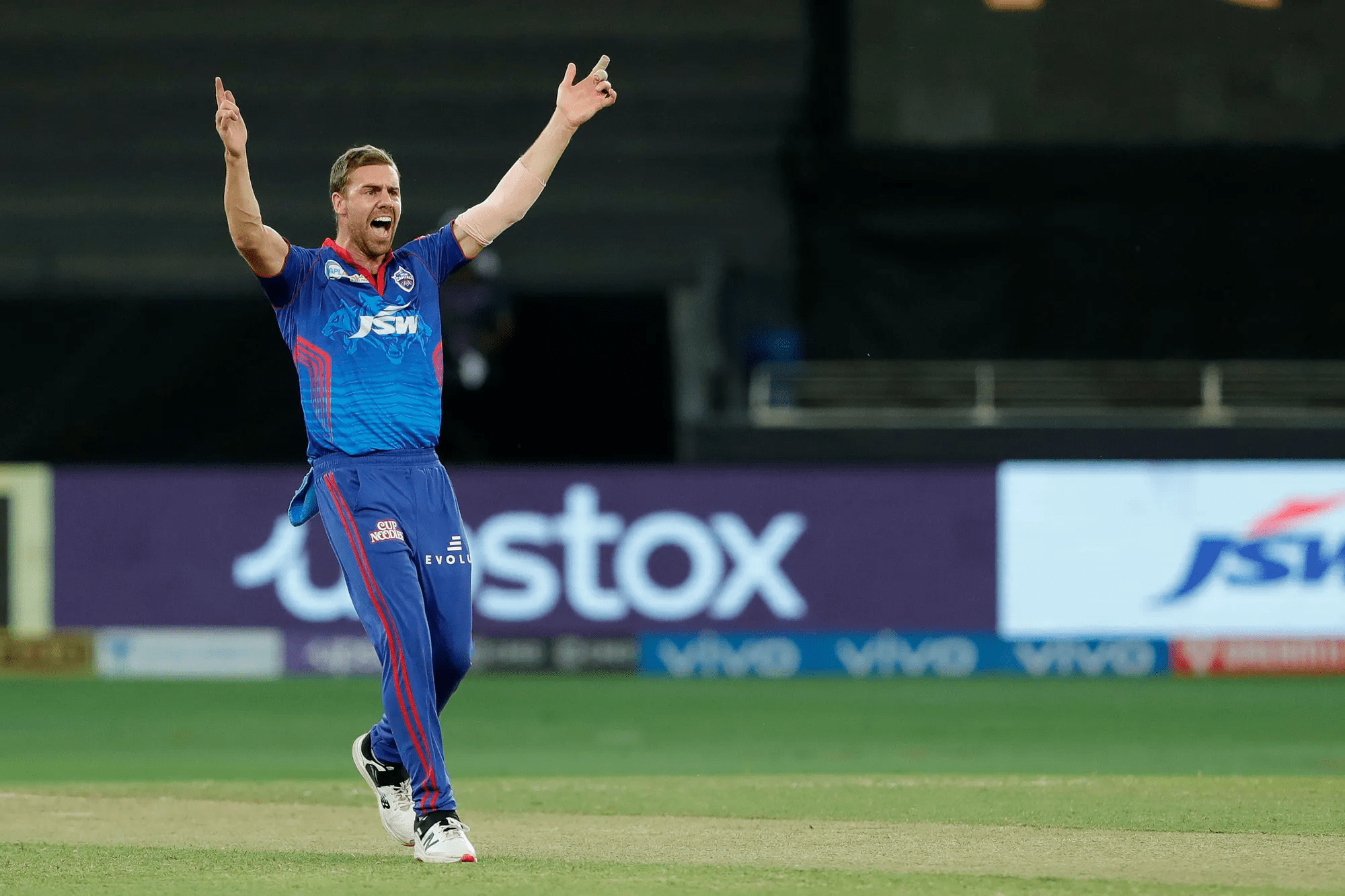
Photo by Saikat Das / Sportzpics for IPL
As expected, those speeds are from Nortje, because he is express pace, the interesting bit is that he has been bowling them on slow pitches. This sounds a bit counterintuitive to the regular fan, should he not be taking pace off the ball?
I mean, everyone knows that in T20s pace bowlers are vulnerable throughout the full 360 degrees of the field. Their big weapon in preventing boundaries is, in large part, by getting the ball past the bat, more plays and misses, or by inducing a poor contact that will not travel to the boundary. And on slow pitches or certain conditions, it is difficult for the ball to beat the bat or to induce poor contact at speed.
The logical thing for many is pace-off the ball.
But, according to Piet Botha, it's more than just about whether or not to take the pace off the ball on slow pitches.
"Having an attacking mindset can create dot balls," says Botha. "Sometimes bowling with good aggression and hitting the pitch hard can be as good as bowling many slower balls because you are thinking defensively."
In the UAE, Nortje has been effective with the hard length variation, hitting those hard Test-match lengths and they have proven to be as effective as the variations. He has been making use of the Test cricket wisdom to try and hit the top of the off-stump, and it's working well.
"Gone are the days where you can just roll the fingers over the ball and take pace off it," he says. "Batters now just hit through the line and smash it for six or four."
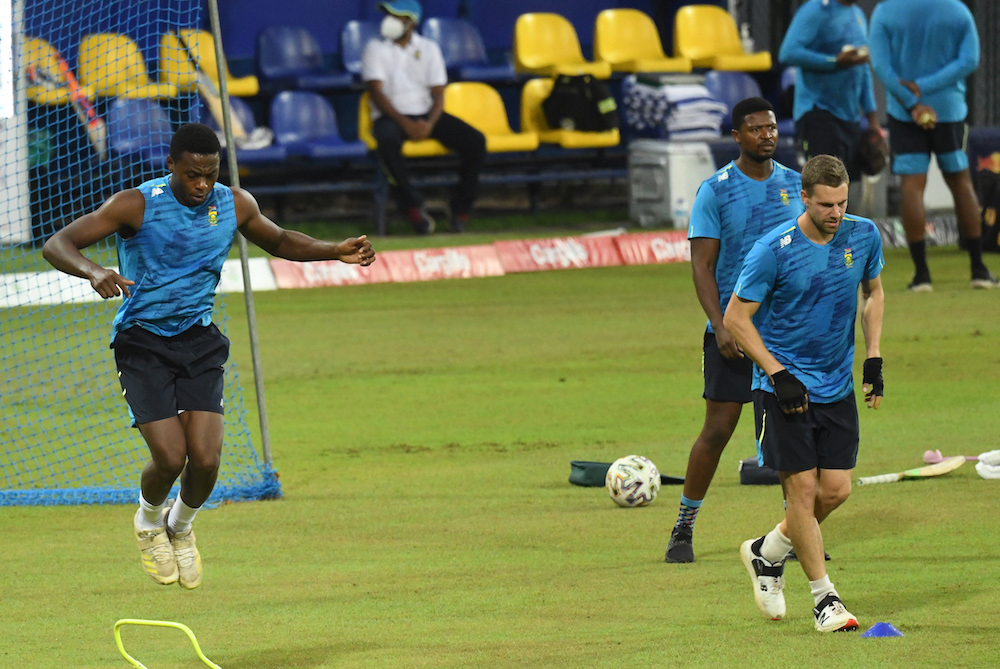
So, the plan should not end with the ball just being slower, it should be an attacking slower ball, an aggressive slower ball, not short slower balls that are attempts at just managing the run rate. Batters will simply sit back and attack. In any case, batters are almost always expecting the slower ball.
Botha feels that sometimes bowlers might be discouraged to persist with the hard length or pace if a perfectly attempted delivery goes for a boundary.
"It is vital that you maintain your aggression and that you bowl each delivery with the intended purpose," he says. "The moment you hesitate or bowl any delivery without focus or purpose, you will be exposed."
And given that the Proteas have two very fast pacers in Kagiso Rabada and Anrich Nortje in the T20 World Cup side, maintaining their aggression and ability to hit the deck hard for a bit longer could help South Africa go all the way.
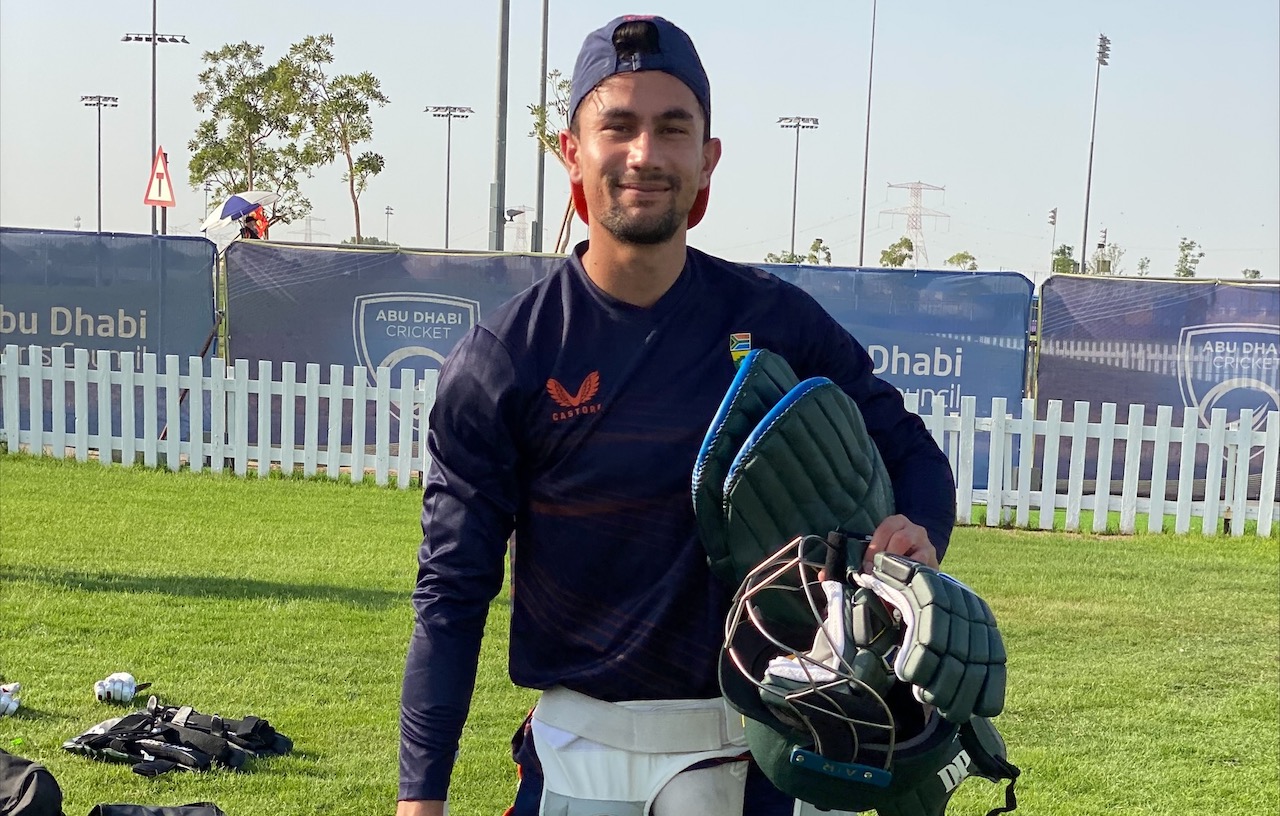
Bjorn Fortuin: The Player that tackles pressure head on
By Nasri Alexander
When Bjorn Fortuin walked out to bat for the first time for the Proteas it was in a T20 international in Durban against England in February 2020.
The pressure could not have been greater, Dwaine Pretorius had just been trapped lbw by seamer Tom Curran and Fortuin came to the crease and would be on strike with the home team needing three runs to win off the last ball of the game.
The series was played before the Covid-19 virus became a global pandemic and ravaged the world so Fortuin, whose primary role in the national side is as a left-arm spinner, was walking into the cauldron in front of a capacity crowd at Kingsmead.
After a chat with his partner, Rassie van der Dussen, Fortuin surveyed the field then took strike - heart probably skipping a beat - and as Curran got into his delivery stride the batter went down on one knee and tried to lap the ball over the short fine-leg fielder.
It was a brave shot to attempt in the circumstances and it looked as though Fortuin had pulled it off but Adil Rashid backpedalled and took the catch to give England the win.
While he may not have succeeded in pulling off a victory for his country in the frenzied atmosphere in KZN, the bravery of at least attempting to try the shot showed that Fortuin at least has a clear mind and a plan in pressure situations and importantly backs himself to execute.
"I'd rather try and fail, than never try at all" - William F. O'Brien
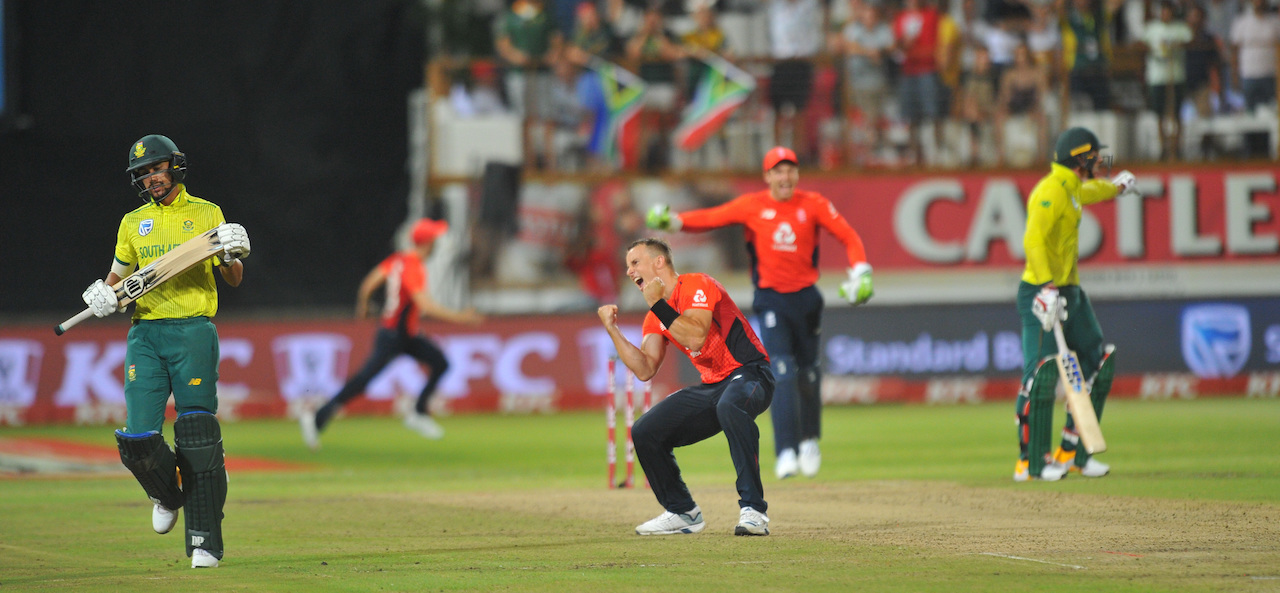
The Paarl-born player enjoys the big pressure moments, and it seems he thrives when his team needs him the most.
Back in January 2019, Fortuin's domestic franchise, the Lions, needed to win the final 4-Day game of the season against the Warriors to clinch the trophy and they had an awful start to the contest as they slipped to 96-6 early on the first day.
Fortuin again showed he is the man for the big occasion as he slammed 183 batting at number seven with the Lions eventfully getting to a first-innings total in excess of 400.
He then also contributed with the ball in a match that went down to the final few overs in the last session of the fourth day with the Lions sealing a dramatic victory to take the title.
The Proteas are on the cusp of another adventure to a World Cup and Fortuin might well be a key player in the United Arab Emirates as the slower bowlers around the world lick their lips at the likely conditions they will encounter.
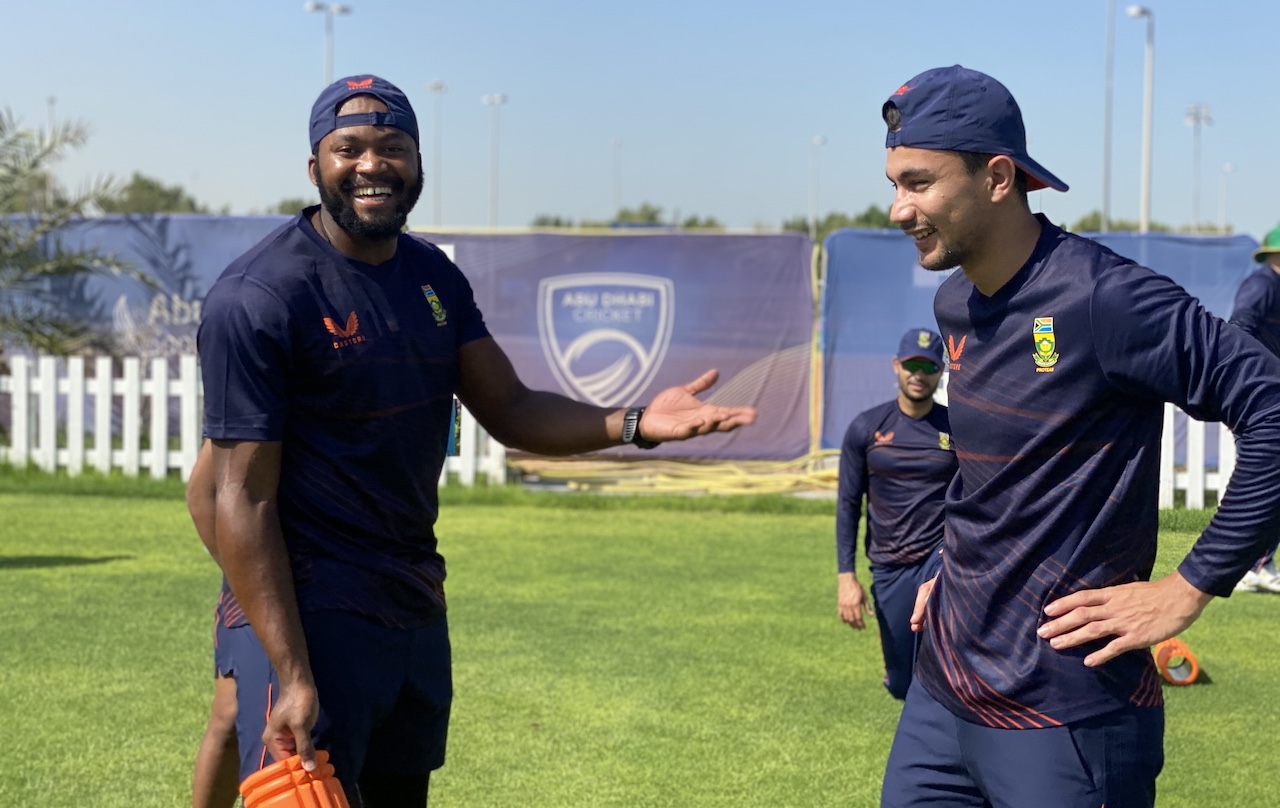
Photo credit: Cricket South Africa
Everybody in the cricketing world knows South Africa's record at ICC tournaments in the past, the dreaded 'C' word always pops up. Will they fold again when it is crunch time?
Former Proteas, some legends of the game, have not handled the big moments in big tournaments well and in most cases, it has cost them dearly.
The left-arm spin of Fortuin has become somewhat of a specialist new-ball bowler in T20 cricket, when batters naturally come hard, but that has not fazed him throughout his career.
Ahead of the global tournament, and while the Proteas were in quarantine in Abu Dhabi, Fortuin was asked why he seems to excel in big moments when the pressure is on?
At first he could not give a reason but then simply said: "There's no point in shying away from it (pressure moments). I feel if you face it head-on and accept the challenge there's a bigger chance of you succeeding than when you try to hide away."
It was a simple answer, but it also showed that as a starting point he has the right attitude.
If anyone has watched Fortuin play - for the North West Dragons, the Lions, the championship-winning Paarl Rocks or the Proteas - in any format over the last few years, you would come across a player that does not back down from any challenge and that includes having a feisty attitude.
He is known to stand up for himself and his teammates if it comes to a verbal war out in the middle.
There was some consternation to the selection of the 26-year-old in the 15-man World Cup squad, but he promptly shut everyone up with an outstanding series in Sri Lanka.
Fortuin will also go into the global showpiece with no baggage of previous tournament failures as this will be his first time on the biggest stage.
With no baggage, the right attitude and also just a couple of months married, Proteas skipper Temba Bavuma could well turn to Fortuin when it is crunch time at the T20 World Cup.
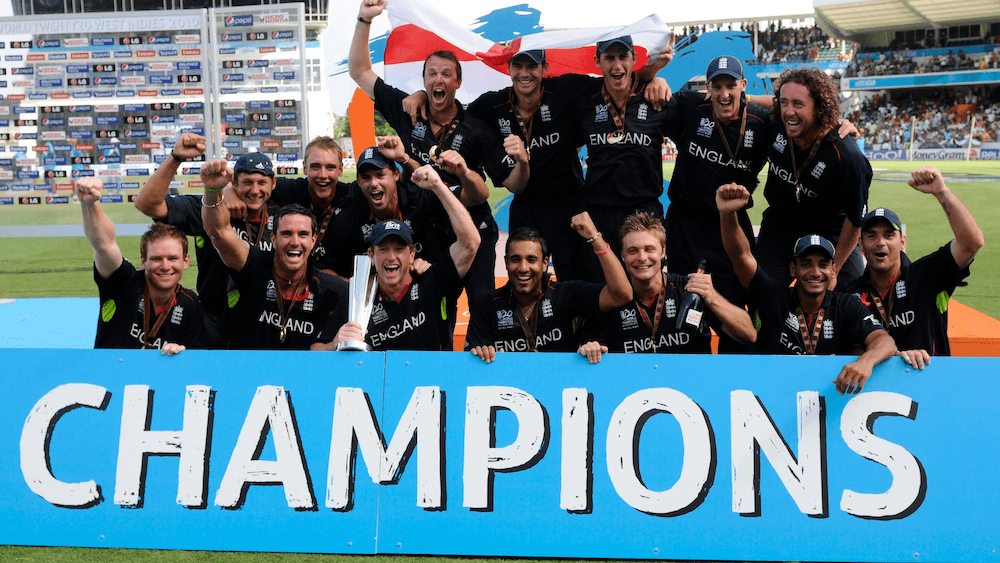
What Does It Take To Win a T20 World Cup?
By Aaron Viles
So here we are.
After a 1-year postponement and a change of venue due to the impact of the Covid-19 pandemic, the 2021 ICC T20 World Cup is almost upon us.
18 teams will compete for glory in the irrepressible heat of the United Arab Emirates; only 1 will etch their legacy into the hallowed halls of cricketing history for the rest of time.
But on the eve of this truly mouth-watering tournament, you might be wondering, what does it actually take to win a T20 World Cup?
Is it well-implemented strategy? Is it maintaining a sense of level-headedness during pressure situations? Or does the team culture that the side creates ultimately play a major role in their success?
Well, in order to answer that question, I had the pleasure of speaking to an integral member of the iconic England side that lifted the ICC T20 World Cup back in 2010, Warwickshire and former Yorkshire all-rounder Tim Bresnan in order to gain a greater understanding of the things that make a successful side tick during the course of a T20 World Cup.
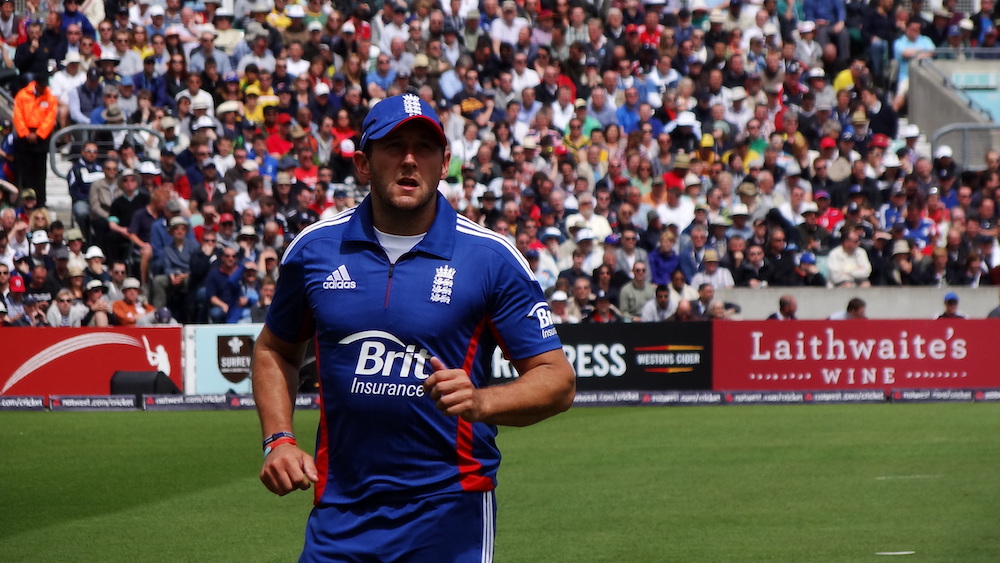
At first, we spoke about the preparation before the tournament itself and the strategies that the Three Lions and a Crown looked to implement over the course of that fateful tournament to which Bresnan stated:
“Basically, it was just all-out attack. Our captain Colly (Paul Collingwood) gave us the freedom to go out there and express ourselves. If there was a bowler who you think you could take down, you went after them and forced them off so there was no way for them to come back.”
Interestingly enough, this enterprising approach to the format from the eventual tournament winners was not just limited to the batting as Bresnan would go on to suggest a short while afterwards:
“With our bowling, the plan was to be ultra-aggressive. Take wickets, not necessarily just bowling to keep the runs down, and set attacking fields. We also made sure that we were one of the best fielding sides in the competition, which I think we achieved by taking some spectacular catches, and Colly was a real driving factor with that.”
After scoring 1008 runs and taking a grand total of 36 wickets, 30 of which came from catches alone, over the course of their 7 World Cup matches, it’s pretty safe to say that the England side of 2010 certainly achieved their aim of being one of the most attacking sides in the tournament when it came to all three cricketing departments.
And one particular member of that team was absolutely instrumental in implementing that strategy as the tournament progressed.
As the conversation continued and the nostalgia of that incredible tournament began to flow once more, one name in particular began to crop up over and over again.
Paul Collingwood, England’s skipper for the 2010 T20 World Cup.
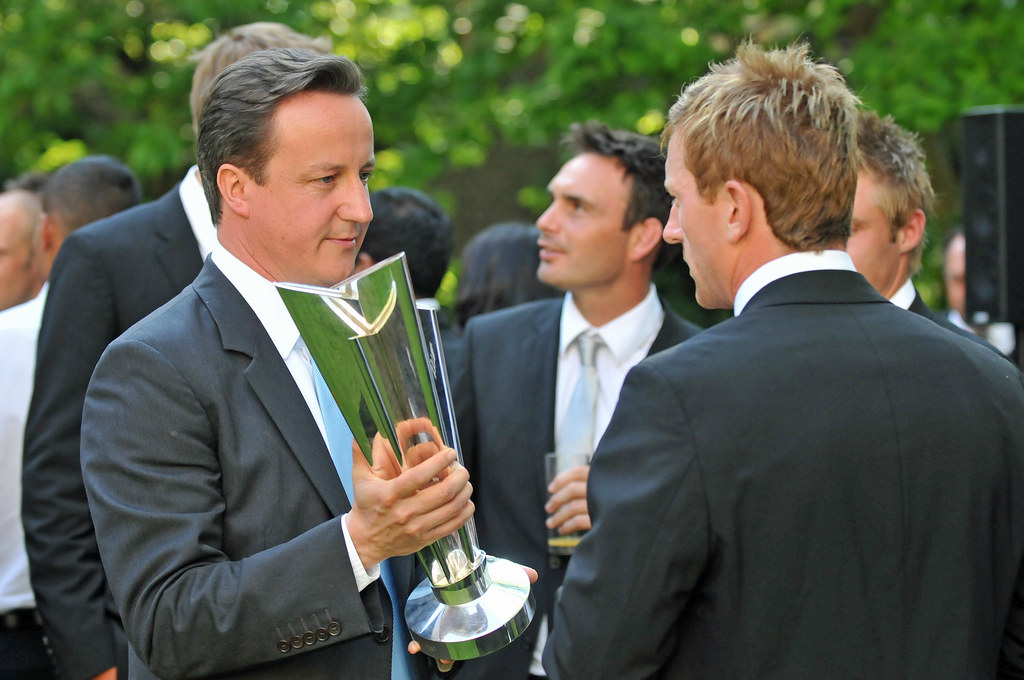
David Cameron holds the ICC Twenty20 World Cup while talking to England captain Paul Collingwood in the Downing Street garden, 24 May 2010; Crown copyright.
Given the recent conversations with regards to T20 captaincy in this year’s IPL and the sheer importance of top-quality captaincy in the format, it didn’t come as a surprise to me when Collingwood’s name was mentioned, but it was fascinating to find out just how pivotal of a role the legendary Durham all-rounder played in moulding England’s road to T20 World Cup glory both on and off the field.
“I think one of the deciding factors behind us winning that tournament was enjoying the cricket that we were playing.” Bresnan exclaimed.
“Everyone was enjoying playing the aggressive brand of cricket which was new to England at the time, and it treated us well in the next five to six years after that World Cup. We also enjoyed each other’s company off the field, making sure that we celebrated our wins and having fun both on and off the field. We played a lot of golf, we relaxed…one of the things that Colly was massive on was creating a team dynamic that was enjoyable for everyone and I think that we achieved that.”
Unsurprisingly, it was this strong team culture that Collingwood and the England leadership group created away from the field that Bresnan believed to be a key factor behind the team’s eventual success at the 2010 T20 World Cup.
“We had a license to do whatever we wanted…we trained hard, we were smart and in a place like the Caribbean, we just had to enjoy it. It’s important to enjoy the cricket but also enjoy the culture, the occasion and the experience, and I think that massively contributed to us winning the competition.”
It most certainly did.
On 16th May 2010 at the iconic Kensington Oval, ‘Captain Fantastic’ himself Paul Collingwood flicked Shane Watson through mid-wicket for four runs to take England to their first and, to date, only ICC T20 World Cup trophy.
So, with all of this insight in mind, we find ourselves coming back to the original question at hand; what does it take to win a T20 World Cup?
Well in truth, it’s a perfect storm of factors that ultimately shape the winner of tournaments like these.
Proper execution of batting and bowling gameplans, strong leadership from captains and keeping a level head during moments of intense pressure is absolutely vital but having gained a great deal of insight from a former T20 World Cup winner, it seems as though it’s also extremely important to create a team dynamic which keeps the side in the best frame of mind for the duration of the tournament.
In a format as unpredictable as T20 cricket, you can never truly prepare 100% for the situations that may present themselves over the course of a game, the 2016 T20 World Cup Final is a testament to this, but with the right combination of well-implemented strategy, courageous batting and bowling approaches and a suitable team environment from which the players can thrive off as the tournament progresses, any of the 18 sides could potentially seal their place in the cricketing history books come the 14th November in Dubai.
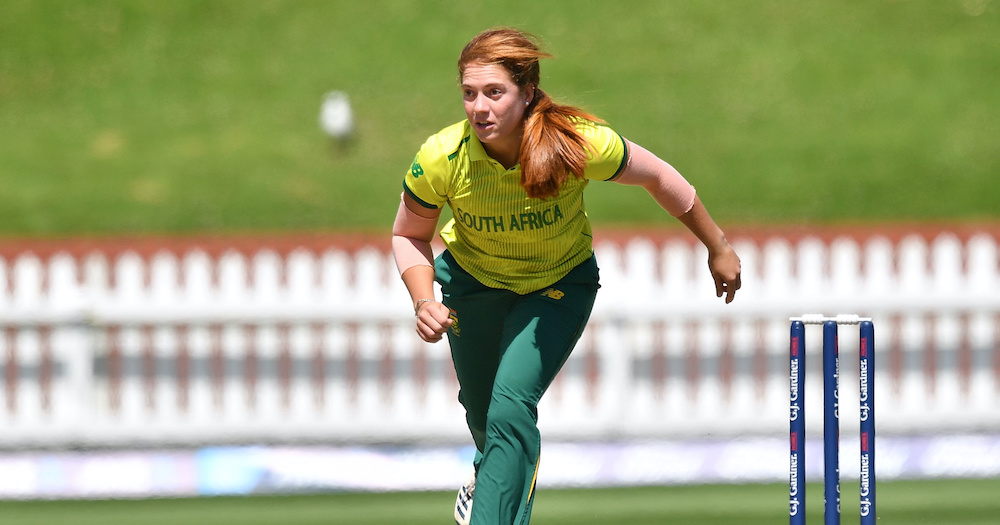
"Keep it Simple and Trust the Process"
By Emily Norris
With the ICC Women’s Cricket World Cup coming up in March next year, I interviewed Nadine de Klerk to find out how she prepares for a World Cup and how she makes sure that she executes in the crunch moments.
De Klerk has played in two ICC tournaments so far – the ICC Women’s Cricket World Cup in 2017, and then the ICC Women’s T20 World Cup last year.
As we all know, Covid-19 has put a halt on many cricket tours and tournaments, including the ICC Women’s Cricket World Cup which was originally scheduled to take place in February and March of this year.
However, the Momentum Proteas were able to go and tour the West Indies last month.
“With regards to preparation for the World Cup, we were very fortunate to go to the West Indies, to play a bit of cricket. We got to play 5 ODIs there, which I think is really good. There were a lot of opportunities for everyone to put their hands up, so I think that’s a good way to start.”
The Momentum Proteas tied the T20 series 1-1 with the Windies, but more importantly, they won the ODI series 4-1, which would give them a confidence boost going into the ICC Women’s Cricket World Cup of the same format.
In addition to their Windies tour, many of the Momentum Proteas take part in Australia’s Women’s Big Bash League.
“I think just playing cricket at this point in time is very important, so the fact that we have quite a few girls in Australia for the Big Bash is a good thing. When we go back home, we’ll work with our personal coaches as well – having camps and really working on our specific skills.
"We have a really good squad and a lot of depth in our squad, so it’s just about finding your purpose as a player and as an individual, and what you bring to the team.”
Plans and preparations for a World Cup are very similar to those for a series, according to De Klerk, with the only difference being added pressure making it more of a mental game.
“Preparation is still the same because your skill doesn’t necessarily change for a tournament you play in. For a series, there’s obviously a lot less pressure compared to a World Cup which is on the big stage, with thousands of people watching you.
"You have to execute in pressure situations and it’s not always easy, but I think you have to just make sure that when you go to training sessions or when you have warm-up games, that you put yourself under pressure. Try and train under pressure as much as you can. Create scenarios; challenge yourself just to get that pressure going.
"It will never be the same, but just to train with a bit of pressure will help. From a mental point of view, you might work a little bit harder on that mentality side of things, because the pressure is a bit higher and a lot of people are watching you, but I don’t think the preparation or coaching changes.”
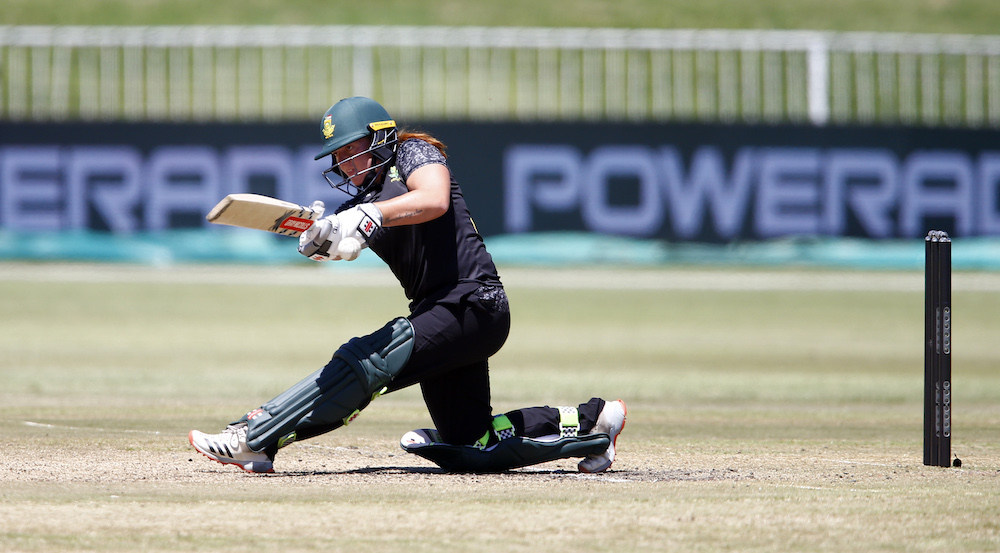
De Klerk reiterated that it’s important to have a purpose to your preparation.
“I think with everything you do, there has to be a purpose. Whenever we go to the nets, everybody has their own specific plans and individual plans and you know exactly what you want to do, and that is important – to know exactly what you work for and to try and prepare to the best of your ability, according to your role that you are given within the side.
"It really comes down to your own personal skill – and when that fires as a unit, it becomes very difficult to beat a side.”
It’s also important to “try and keep it as simple as you can and to trust your processes. Not trying to think too much about the fact that it is a big tournament or that it is the World Cup. Because sometimes your head can run away with you because you are thinking of the tournament that you are playing in.”
With rain playing a big factor in the result of last year’s T20 World Cup, the Momentum Proteas couldn’t always get their training sessions under their belt, which is why De Klerk said that whenever you do get the opportunity to train, it’s important to make the best out of it and to always stay on top of your game.
Staying on top of your game isn’t just making sure that you are nailing skills, but players need to stay on top of their game mentally too.
Hence, staying mentally ready is a key part of the preparation that De Klerk learnt from last year’s T20 World Cup.
“Sometimes you don’t get to play a lot, or a lot of things don’t go your way, but I think always be ready, from a mental point of view. Even though it’s difficult sometimes, I think you need to make sure that you take care of your mental health, your mindset as well, it’s a massive thing in cricket.”
De Klerk loves bowling in T20s because of the challenge and pressure that it brings. Her strategy doesn’t change a great deal, but she always tries to mix it up.
“T20 cricket has grown immensely over the last couple of years. I think it’s very difficult for bowlers these days, but I love T20 bowling, that’s my favourite format to play. You can never stop learning; you have to mix it up all the time. We all know that. You can’t just put the ball there anymore.
"Female players, especially now, can clear the ropes a lot more than in the past. It’s also about varying it. I try and work on a variation as often as I can. I try and learn new things, mix it up, and just try to grow as a cricketer.”
De Klerk also stated that experience plays a massive role, as well as knowing exactly what you want to do and what your plans are.
After being signed by the Brisbane Heat in WBBL06, she was retained by the same team for the 7th edition of the tournament.
I asked her how the WBBL has helped her improve her bowling as well as her batting.
“WBBL for my career was huge. I think it just shows where women’s cricket is currently at, and I think that you can learn so much. I batted in different positions, bowled in different scenarios and situations, and I had to adapt and adjust to whatever was given to me on the day, and I think that’s the special thing about T20 cricket.
“You must always be on your toes. [The game] can change in 20 seconds, it can change in 2 overs, and there can be a complete switch. WBBL has helped me – after the WBBL, you spot some errors that you have to work on, and I think going back home I had a clear plan on what I wanted to do and where I needed to improve on.
“WBBL made me think a bit differently as well – I came in at different situations all the time, so I had to stay on top of my game. I had to outthink batters, or bowlers when I was batting, and I had to try and think one step ahead.”
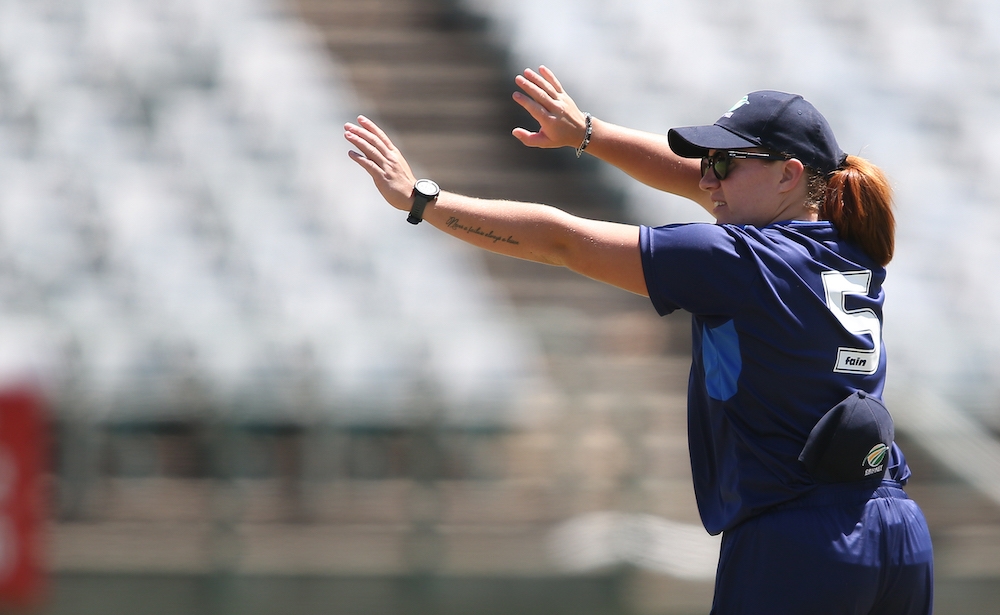
Execution in high-pressure moments is often not just about skills but involves a lot of mental preparation too.
“When it comes to crunch times and high-pressure situations, it comes down to really trusting your game and what you’ve been doing back home. Especially in pressure situations, when you have to think clearly, you have to make sure that you know what you want to do and that you can back whatever you’ve done in the nets or whatever it is you’ve been working on. You can’t get to a World Cup and worry about what you haven’t done in the last couple of months.
“When it comes to tough situations, I try and keep it simple. I try to keep a clear mind, not get ahead of myself, and focus on the little things – focus on my strengths. Sometimes it doesn’t work, but if it does, it’s very sweet.”
Something that she also emphasised was that “you can’t get to a pressure situation and try things you’ve never done before. You have to stick with what you know best. You can’t all of a sudden as a bowler try a back-of-the-hand slower ball, but you’ve never done it before.
“Stick to the basics, to your recipe, to what you’ve been doing back home. It’s not always going to work – batters are allowed to play good shots and bowlers are allowed to bowl good balls, and sometimes it’s not going to work out the way you want it to, but I love playing under pressure.
"[If the opposition needs] 10 runs off the last over, I would like to bowl it – I love playing under pressure and challenging myself. Sometimes it’s going to work and sometimes it’s not, it’s just how cricket goes.
“Sometimes a lucky edge can go to the boundary, or sometimes the edge goes straight to the keeper. At the end of the day, it’s really about keeping it simple, sticking to your guns, what you know best, and trying to execute your skills to the best of your ability. And like we know with cricket, it’s 80% failure, so you will fail, it’s part of the game.
“It’s just about how you get back up the next game when you do fail. If it means you’re out of the tournament, like us last year in the semi-final when we lost, it’s just about how you get back up for the next tournament.”
“We’ve been working hard, and we feel confident for this next World Cup. It’s just about finding that balance, really backing your skills and being a unit, being there for each other. If you try and tick all those boxes then more times than not it will go well.”
The 21-year-old Momentum Proteas player Nadine de Klerk made her ODI debut against India in 2017 and her T20 debut against India in 2018 but said that her 2019/2020 season was probably the season where she started being effective within the side.
Advertisement
Ezra Poole's Online Wicketkeeping Academy
Learn how to Master The Craft of Wicketkeeping Without Having to Hire a Full-Time Personal Coach.
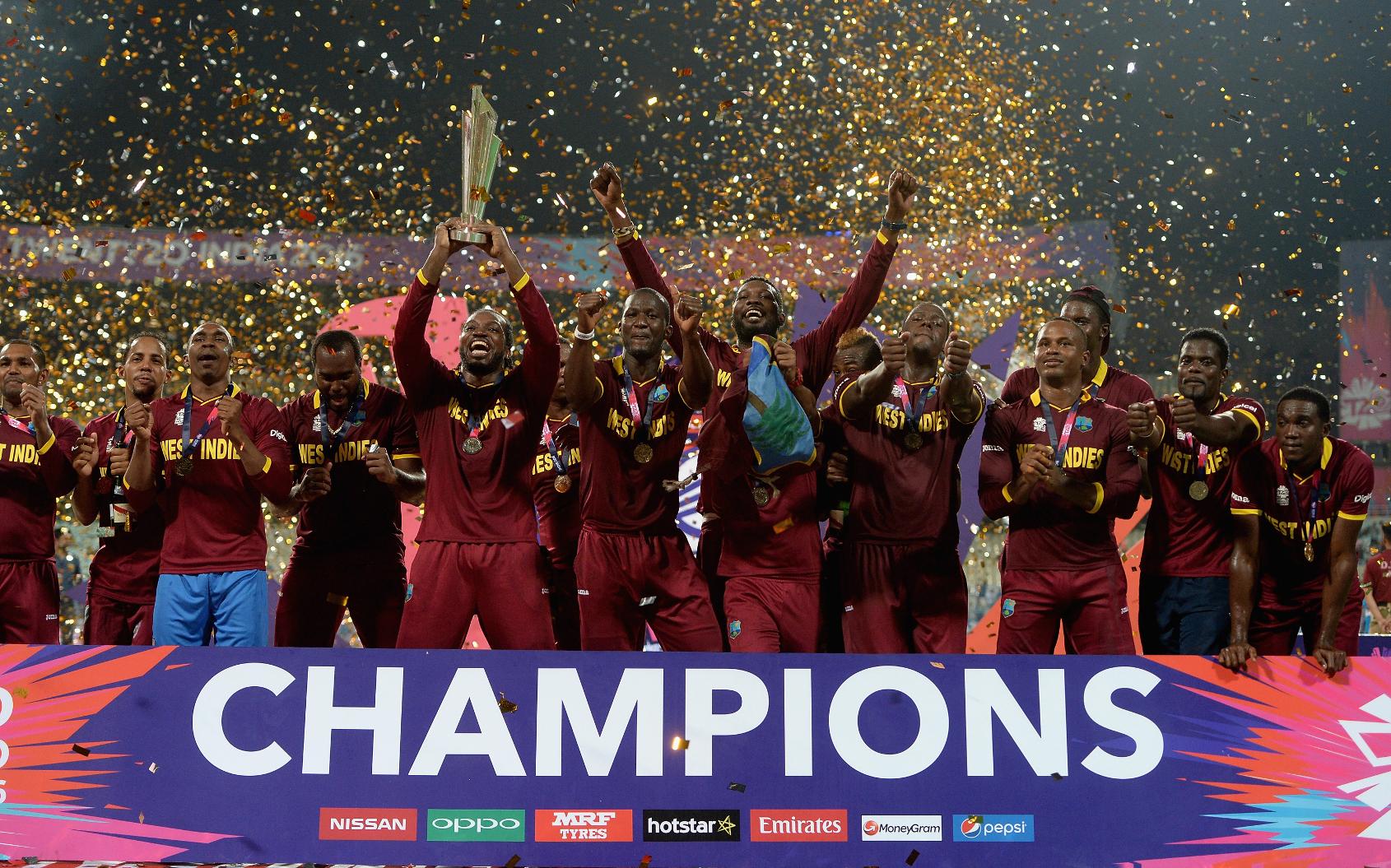
Meet the Teams in the T20 World Cup
By Abhai Sawkar
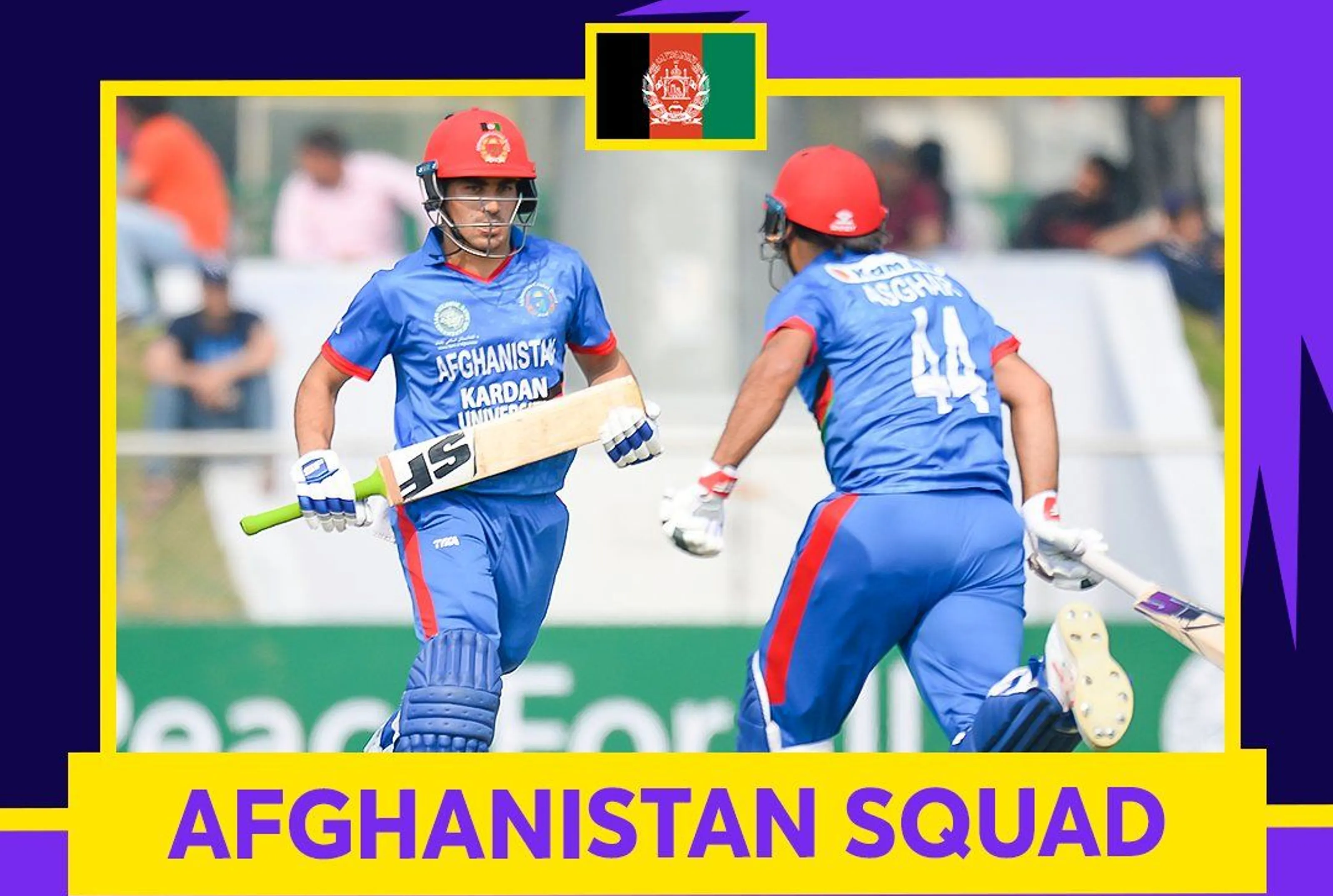
This is the fifth T20 World Cup for the Afghans, and it's been quite the eventful recent few weeks for them. Rashid Khan, the world-class legspinner, was nominated T20I captain but another shakeup prompted a change in captaincy - the more experienced allrounder Mohammed Nabi was appointed skipper in a last-minute announcement.
While they may not appear to be a threatening force, they have a number of game-changers in their roster. Given the significance of spin since the tournament will be held in the UAE, Afghanistan's spin twins - Rashid Khan and Mujeeb Ur Rahman, will have a pivotal role to play. Both were teammates this year in the IPL, even though the Sunrisers had a torrid tournament. In addition, they have plenty of top-order power with the talented young big-hitters in Hazratullah Zazai and Rahmanullah Gurbaz.
But they will all look to spring a few surprises, and they're well and truly capable of doing so.
Roster:
Mohammed Nabi (c)
Asghar Afghan
Fareed Ahmed
Usman Ghani
Rahmanullah Gurbaz (wk)
Hamid Hassan
Karim Janat
Rashid Khan
Gulbadin Naib
Hashmatullah Shahidi
Mohammed Shahzad (wk)
Naveen-ul-Haq
Mujeeb Ur Rahman
Najibullah Zadran
Hazratullah Zazai
Reserves:
Sharafuddin Ashraf
Dawlat Zadran
Samiullah Shenwari
Fazalhaq Farooqi
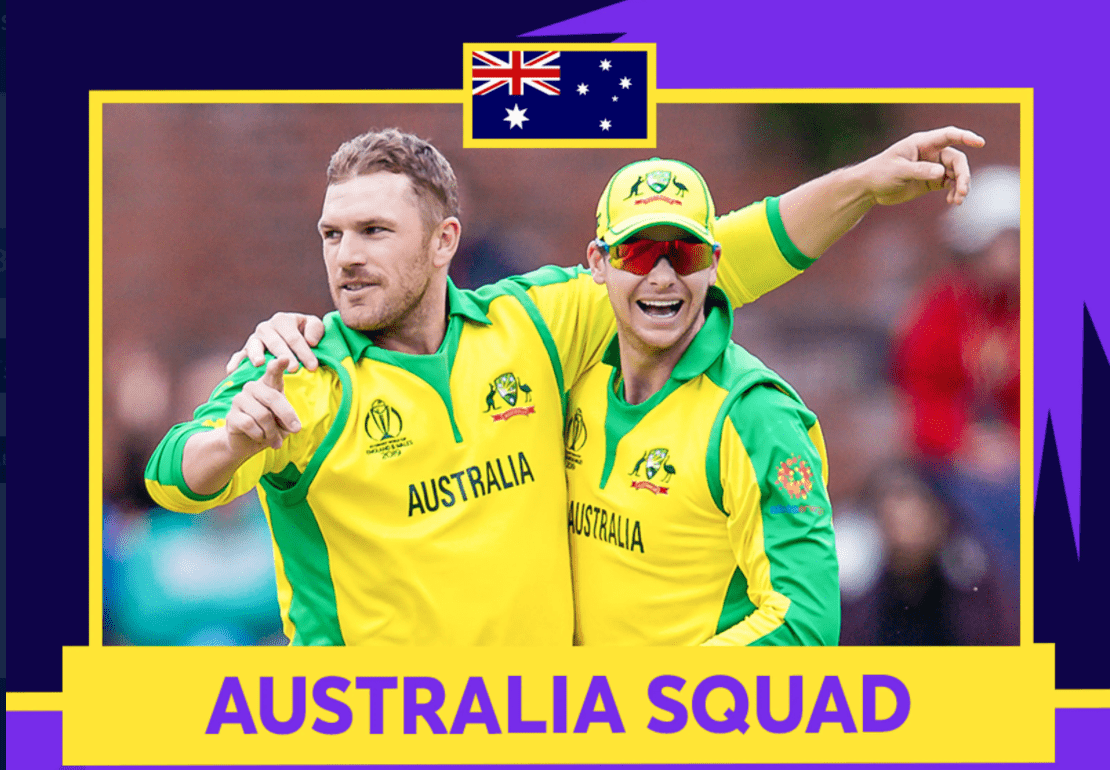
Known to be competitive and tenacious, the Aussies will look to add to their ICC trophy cabinet with a first T20 World Cup win. More recently, their run in T20Is has been pretty forgettable, with series losses in the Caribbean and in Bangladesh. In addition, the Australian contingent in the IPL hasn't quite had the best of times this year either apart from just a handful of players. With that being said, they'll be more motivated than ever to flip the script and redeem themselves.
Amid the tough situations, there have been plenty of positives. Mitchell Marsh's rich vein of form at #3 has provided the team with a new option, and Glenn Maxwell's breakthrough season with RCB couldn't have happened at a more timely juncture. The only newcomer in the squad is Josh Inglis, who supplanted Alex Carey and Josh Philippe as the second keeper to make the squad. He's been in tremendous touch in franchise cricket over the course of the past year and even though he's unproven at international level, there's plenty of incentive after being picked for a world event as a first assignment.
David Warner will be quick to put the IPL behind him and skipper Aaron Finch has reiterated his unwavering support for his opening partner.
And not to mention, they boast a very potent bowling unit, with premier pacers in Starc, Cummins, and Hazlewood and a strong set of spin options, too.
Roster:
Aaron Finch (c)
Pat Cummins
Ashton Agar
Josh Hazlewood
Josh Inglis (wk)
Mitchell Marsh
Glenn Maxwell
Kane Richardson
Steve Smith
Mitchell Starc
Marcus Stoinis
Mitchell Swepson
Matthew Wade (wk)
David Warner
Adam Zampa
Reserves:
Dan Christian
Nathan Ellis
Daniel Sams
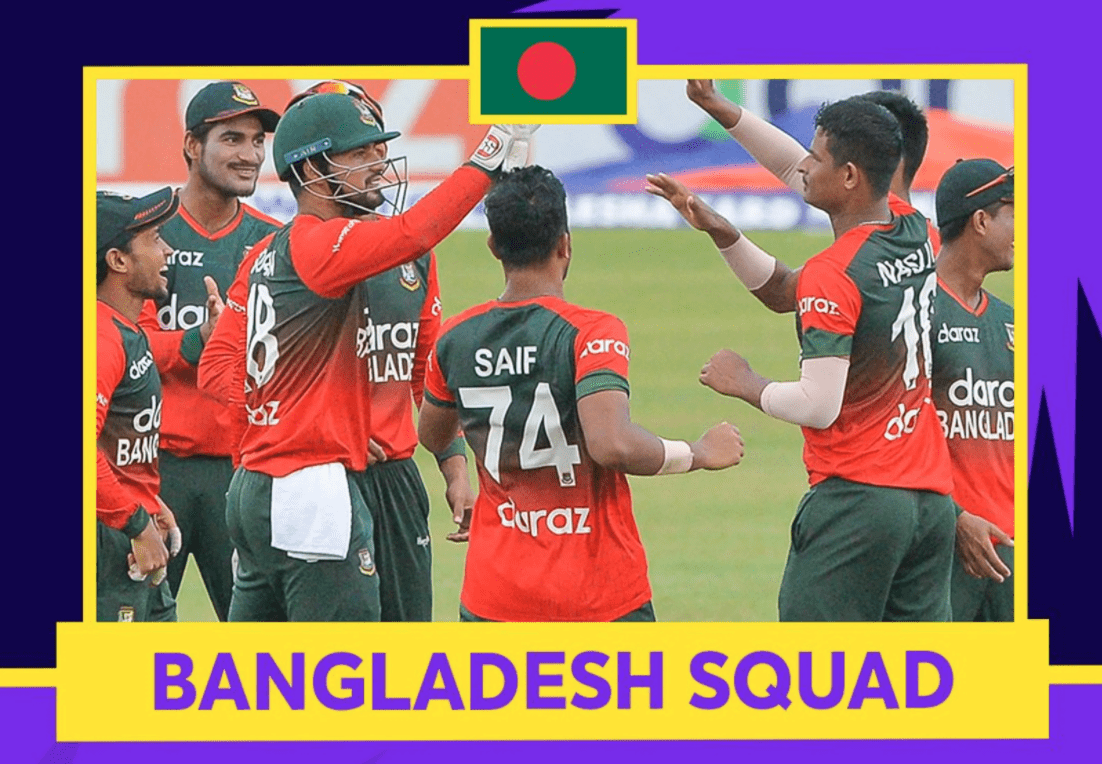
Over the years they've proven themselves to be a very handy side, but they'll look to create an even more profound impression in the T20 World Cup this year. Momentum has been on their side in the past couple of months, with convincing home series wins against the likes of Australia and New Zealand. Their spinners were vital on highly conducive surfaces, but it also begs the question as to whether their batting is strong enough in these conditions.
Fortunately, they're blessed with the leadership of the highly experienced Mahmudullah as well as Shakib's all-round prowess, and a plethora of available spin options to top it off. The only area of uncertainty is the finisher role, and the young batter Shamim Hossain has shown glimpses of potential. Among the spinners, Nasum Ahmed will be one to look out for, since he's regularly been among the wickets over the past 12 months.
Additionally, their pace attack is bolstered with the fit-again express pacer Taskin Ahmed, the guile of the trusted left-armer Mustafizur Rahman, and the emergence of yet another left-armer - Shoriful Islam. Expect them to be able to give top teams a good run for their money and don't be surprised if they produce a couple of intriguing surprises.
Roster:
Mahmudullah (c)
Nasum Ahmed
Taskin Ahmed
Liton Das (wk)
Mahedi Hasan
Nurul Hasan (wk)
Shakib Al Hasan
Afif Hossain
Shamim Hossain
Shoriful Islam
Mohammad Naim
Mushfiqur Rahim
Mustafizur Rahman
Mohammad Saifuddin
Soumya Sarkar
Reserve:
Rubel Hossain
Aminul Islam
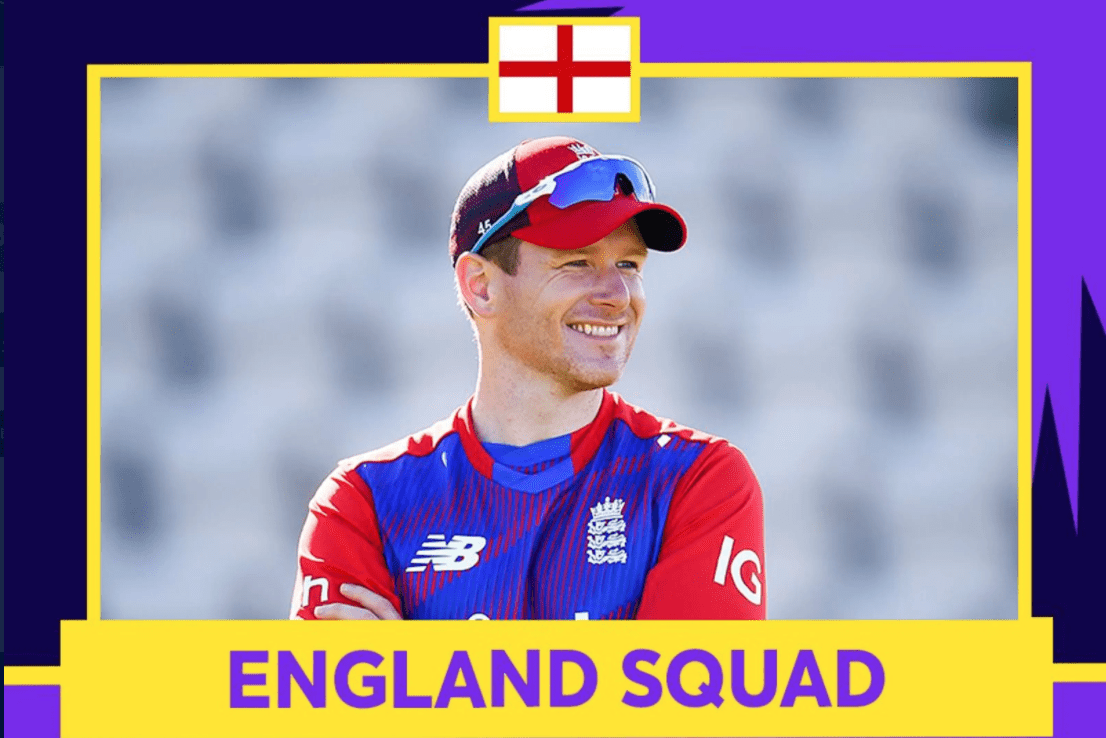
They're portrayed as potential world beaters, and why shouldn't they? Ever since the end of the 2015 World Cup, their shorter-formats approach took on a new dimension, and it paid off. Eoin Morgan successfully led his team to a narrow victory in the 2019 final, and they'll now look to forget about the woes of the 2016 T20WC final.
They definitely have an ominous top order with several big-hitters but at the same time, they have two major voids to fill. Premier allrounder Ben Stokes opted for an extended break from the game due to mental health reasons, and the ever so versatile pacer, Jofra Archer, is gradually recuperating from a recurring elbow injury. Then again, they've found an excellent finisher in Liam Livingstone as well as recalled the express left-armer, Tymal Mills.
A few days ago, allrounder Sam Curran was ruled out of the tournament due to a back injury he sustained during the IPL. As a result, his brother Tom has been added to the squad. All in all, they look to be hot favorites at this point in time. Don't be surprised if they make it all the way.
Roster:
Eoin Morgan (c)
Jos Buttler (wk)
Moeen Ali
Jonny Bairstow
Sam Billings
Tom Curran
Chris Jordan
Liam Livingstone
Dawid Malan
Tymal Mills
Adil Rashid
Jason Roy
David Willey
Chris Woakes
Mark Wood
Reserves:
Reece Topley
Liam Dawson
James Vince
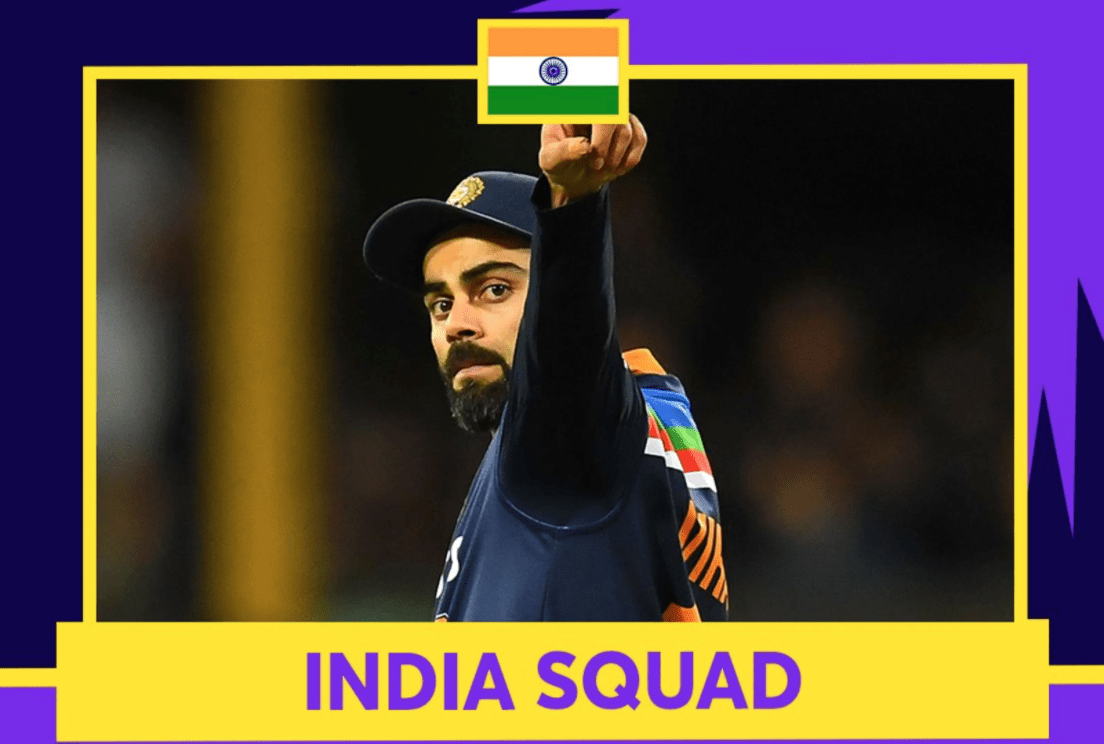
Easily up there with the best, the Indian team will also, in away, look to redeem themselves. They've come up close in the recent ICC events, but one thing is for sure - they have all their bases covered with their squad.
Skipper Virat Kohli mentioned that he will no longer lead the team in this format after this tournament, so there's a lot riding on him. They have one of the best limited-overs seamers in Jasprit Bumrah, a host of knowledgeable spinners, and plenty of powerful hitters, too.
The biggest question mark for them is Hardik Pandya's readiness to take on the allrounder role. Pandya has been nursing a back injury for the better part of this year and as a result, hasn't been able to bowl. Furthermore, he has struggled with the bat in the 2021 IPL.
Fortunately, they have proactively addressed this issue by adding Shardul Thakur into the team, at the expense of spinning all-rounder Axar Patel, who now is a reserve player. Leg Spinner Yuzvendra Chahal is a notable omission, given his excellent returns in the IPL, which could've enhanced his chances of making the main squad.
With all things considered, it would be fair to say that they're a favorite to win this event. To facilitate things further, they've recruited multiple IPL bowlers like Avesh Khan and the new young speedster Umran Malik as well as the KKR all-rounder Venkatesh Iyer to join the team during nets sessions. They have set the bar high for being well-prepared and raring to hit the ground running.
Roster:
Virat Kohli (c)
Rohit Sharma
Ravichandran Ashwin
Jasprit Bumrah
Rahul Chahar
Varun Chakaravarthy
Ravindra Jadeja
Ishan Kishan (wk)
Bhuvneshwar Kumar
Rishabh Pant (wk)
KL Rahul
Hardik Pandya
Mohammed Shami
Shardul Thakur
Suryakumar Yadav
Reserves:
Deepak Chahar
Axar Patel
Shreyas Iyer
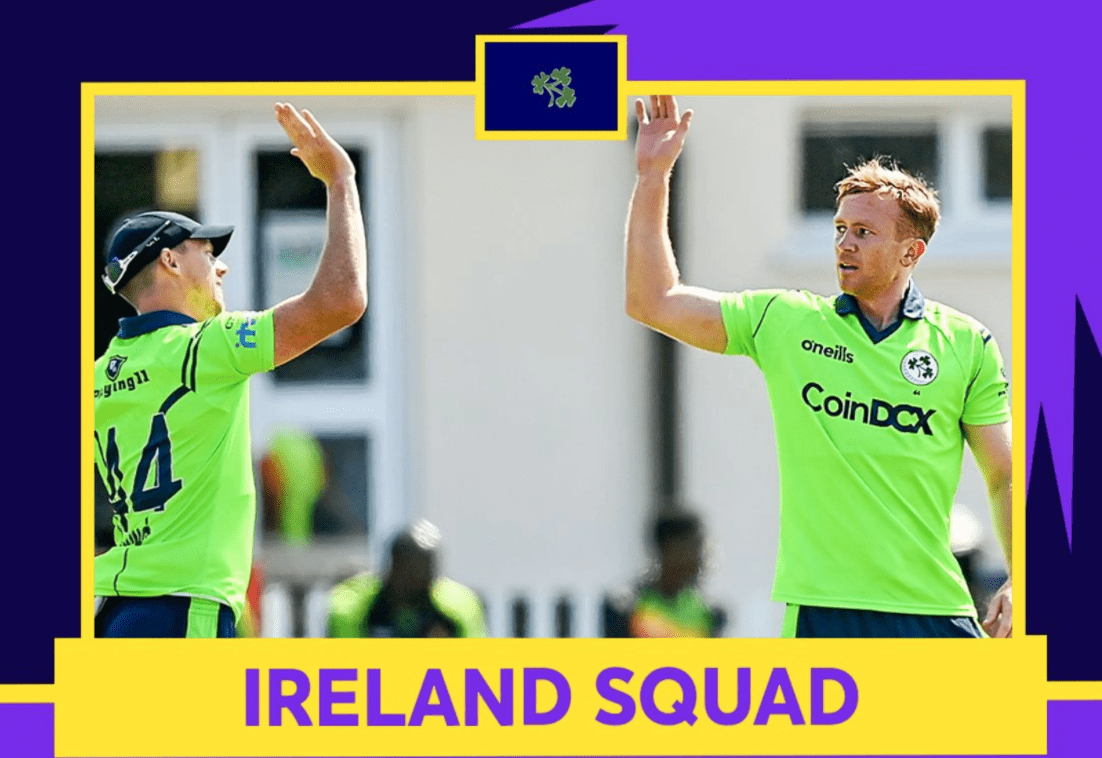
Since their associate days, the Irishmen have been quite an entertaining team to watch. Heading into their sixth T20WC, they definitely have a point to prove. Last tournament, they were upset by a clinical performance from Oman, and now they'll look to enter the main draw.
The UAE will present a unique challenge, since not all the players from this squad have a whole lot of experience there. With that being said, they have the vastly experienced allrounder Kevin O'Brien still in the mix, while a number of their players have transformed their game for the better. George Dockrell, best known for his left-arm finger spin, has improved his batting to the point where he's considered a genuine batting allrounder.
Simi Singh, the Indian-born offspinner, has scored an ODI ton against South Africa not too long ago. In addition, they also have the big-hitting prowess in the highly rated opening batter Paul Stirling. Skipper Andrew Balbirnie has inherited the rains from longtime captain Will Porterfield, and looks a very composed batter and an astute leader to boot. Expect them to play fearless cricket regardless of the situation.
Roster:
Andy Balbirnie (c)
Mark Adair
Curtis Campher
Gareth Delany
George Dockrell
Josh Little
Andy McBrine
Kevin O'Brien
Neil Rock (wk)
Simi Singh
Paul Stirling
Harry Tector
Lorcan Tucker (wk)
Ben White
Craig Young
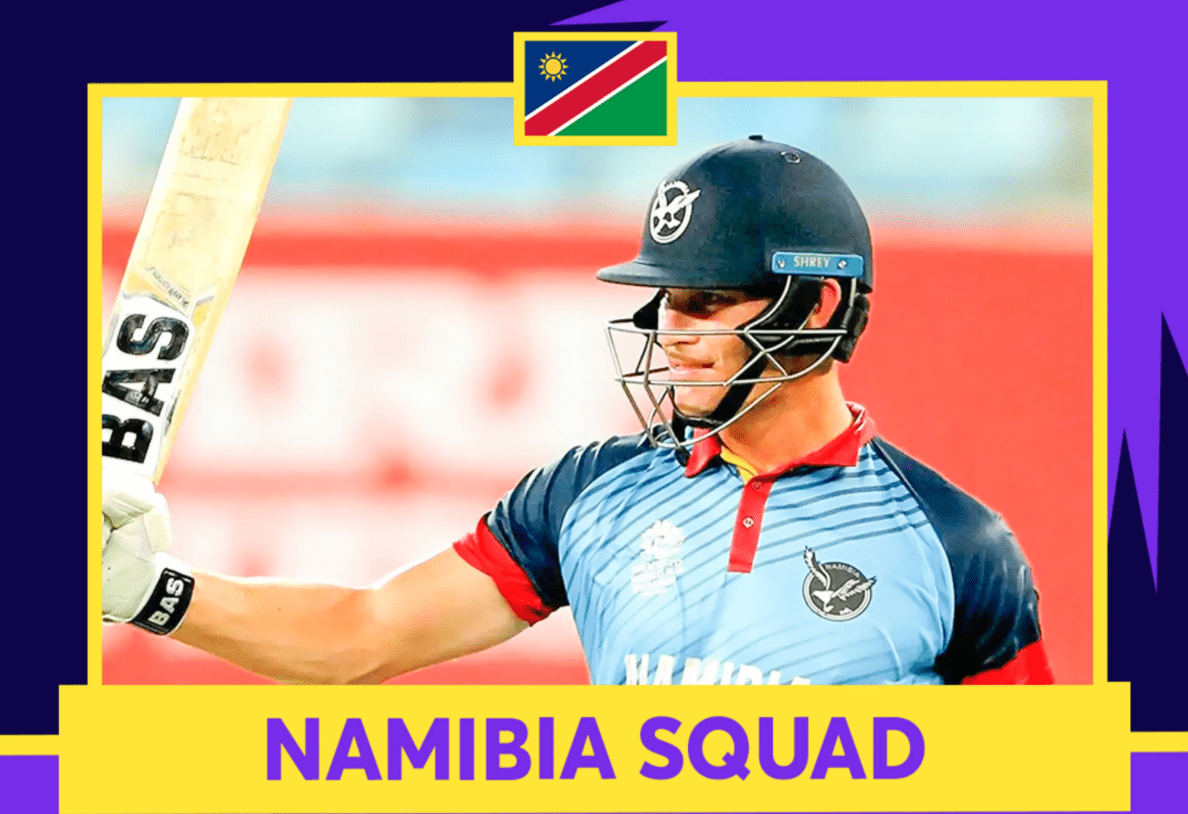
This is the fourth time the Namibian Eagles are in the T20WC Qualifiers. Since they've never made it to the main draw on previous occasions, they have nothing to lose and everything to gain in this upcoming event.
When it comes to the squad, they're brimming with talent and serious potential. Their skipper, Gerhard Erasmus, is a very skilled batter and has added off-breaks to his arsenal to become an even more complete cricketer. JJ Smit is a powerful allrounder who can be devastating with both bat and ball during the death overs.
They've also brought forth the services of David Wiese, the erstwhile Proteas allrounder who has played T20 franchise cricket all over the world, and provides a wealth of experience for a side that's looking to make an indelible positive impression when presented with opportunities.
Craig Williams, another solid seam-bowling allrounder, has been representing the country since 2007. They're one of a handful Associate teams vying for a spot in the main draw, and you can't write anyone off!
Roster:
Gerhard Erasmus (c)
JJ Smit
Stephan Baard
Karl Birkenstock
Michiel du Preez (wk)
Jan Frylinck
Zane Green (wk)
Jan Nicol Loftie-Eaton
Bernard Scholtz
Ben Shikongo
Ruben Trumpelmann
Michael van Lingen
David Wiese
Craig Williams
Pikky Ya France

Arguably the best among the current set of Associate teams, the Dutchmen will look to create ripples as they did a couple of World Cups ago. They're already boosted with players that have taken part in several seasons of county cricket.
Colin Ackermann, the South African born off-spinning all-rounder, has played for Leicestershire, and the evergreen Roelof van der Merwe has been both a county and franchise stalwart for the better part of his career.
Ryan ten Doeschate, the 41-year-old all-rounder, is set to round off his career after this event, so there's a lot on the line for him and the team. More recently, fast bowler Paul van Meekeren had the opportunity to take part in the CPL for the St. Kitts and Nevis Patriots, and every bit of prior experience will come in handy.
They're grouped with Ireland, Namibia, and Sri Lanka, and it's to be noted that they won against Ireland when they last faced off in a T20 World Cup.
Just like it's been mentioned for other teams, it's a shot at redemption for the Netherlands side, too. It's the first major ICC event for Pieter Seelaar as captain. They have plenty of spin options at their service as well as a balanced mix of youth and experience.
Roster:
Pieter Seelaar (c)
Colin Ackermann
Philippe Boissevain
Ben Cooper
Scott Edwards (wk)
Brandon Glover
Fred Klaassen
Bas de Leede
Stephan Myburgh
Max O'Dowd
Ryan ten Doeschate
Logan van Beek
Timm van der Gugten
Roelof van der Merwe
Paul van Meekeren
Reserves:
Tobias Visee
Shane Snater
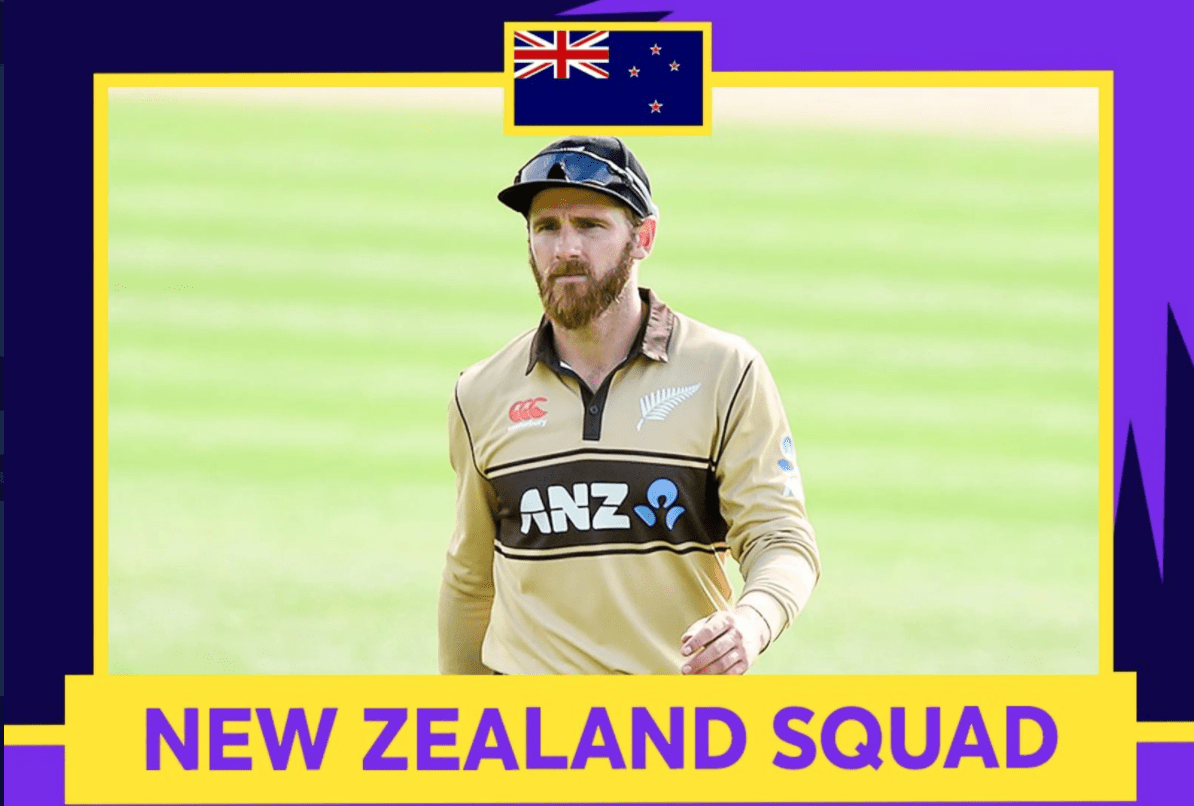
Kane Williamson's Black Caps are looking like a well-oiled machine heading into the T20WC. More than half of their team has been involved in the IPL and those who have received frequent game time have impressed to telling effect.
As expected, they've stacked up on their available spin choices, and have plenty of variety, too. Left-arm finger spinner Mitchell Santner and leg spinner Ish Sodhi are the mainstays, with another leg spinner in Todd Astle providing solid reinforcement.
Another positive takeaway is the consistency of Lockie Ferguson in the IPL. He's been going at under 6 an over for KKR and took 13 wickets in 7 games thus far. He will have a huge role to play in the final against CSK.
Furthermore, Devon Conway, a more recent debutant, has hit the ground running in all formats and is very dependable as an opener or at first drop. This definitely seems like their strongest T20WC squad to date, and they'll want to do more than justice to their abilities and strengths.
Roster:
Kane Williamson (c)
Tim Southee
Todd Astle
Trent Boult
Mark Chapman
Devon Conway
Lockie Ferguson
Martin Guptill
Kyle Jamieson
Daryl Mitchell
Jimmy Neesham
Glenn Phillips (wk)
Tim Seifert (wk)
Mitchell Santner
Ish Sodhi
Reserves:
Adam Milne

When we think of the Oman team, the first memory that comes to mind is their unbelievable win against Ireland. This is only the tip of the iceberg, as they've developed into a pretty handy side in the Associate sphere.
Much of the squad from five years ago has remained the same, with Zeeshan Maqsood now leading the side. He used to open the batting, but has shifted a few positions down and began to bowl some left-arm spin more frequently.
Khawar Ali is another player to look out for: a dangerous top-order batter who can bowl a bit of leg spin. And as is Jatinder Singh, the hard-hitting opener. Singh scored a rapid 107 from 62 against Nepal last month, and every ounce of momentum will be helpful for the Middle Eastern side.
2016 was a briefly memorable year, and they'll look to build on that and make further headway in the coming week.
Roster:
Zeeshan Maqsood (c)
Aqib Ilyas
Khawar Ali
Fayyaz Butt
Nestor Dhamba
Sandeep Goud
Kaleemullah
Ayaan Khan
Bilal Khan
Suraj Kumar (wk)
Naseem Khushi
Sufyan Mehmood
Mohammad Nadeem
Khurram Nawaz
Jatinder Singh
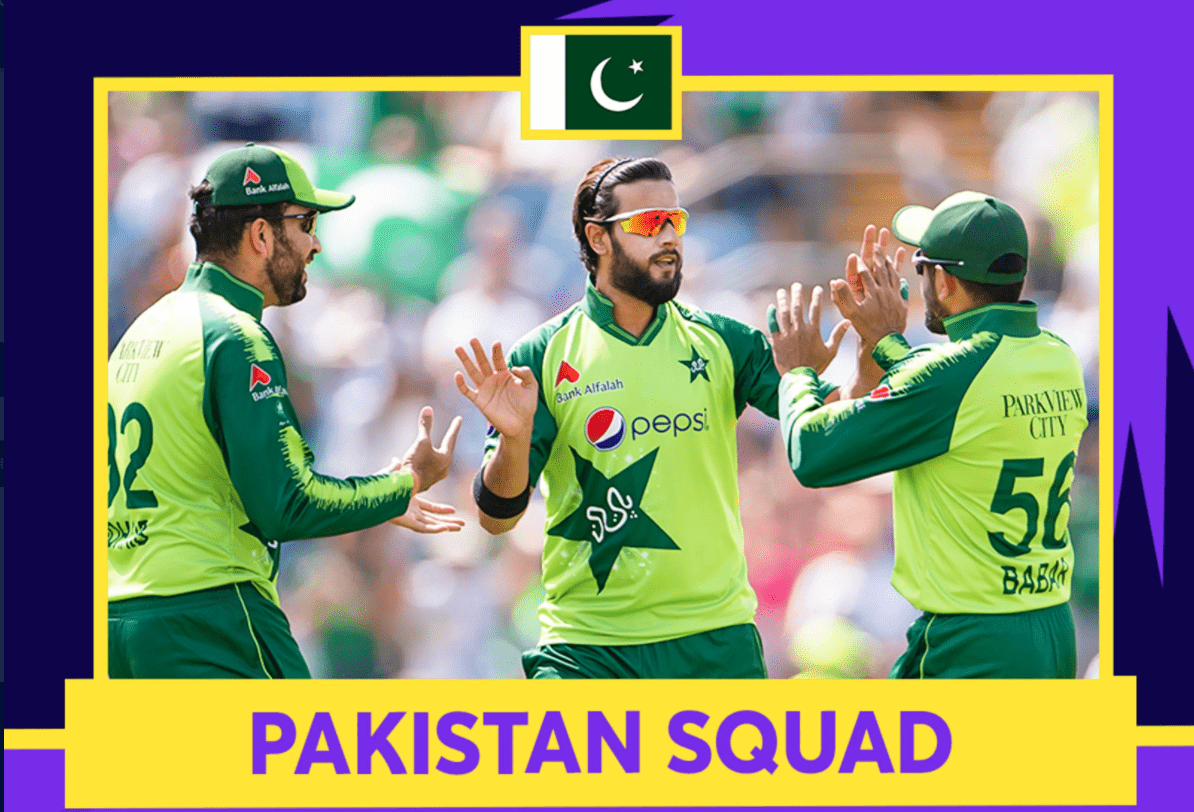
In recent times, Pakistan has been stereotyped as unpredictable, but they boast a pretty formidable squad on paper. They have one of the world's most consistent batters taking charge, as well as a determined bowling unit, too.
The PSL has helped unearth several potential T20 superstars, and they've chosen to back their dauntless veterans to do their job when push comes to shove. Mohammad Hafeez is still very much in the thick of things, as is Shoaib Malik, too.
To make the situation even better, Mohammad Rizwan has really been cleaning up in T20Is this year: 752 runs at an average of 94 and striking at 140.
The only area of slight concern would be a genuine middle-order power hitter. Asif Ali has been searching for consistency for the better part of his international career, and with Sohaib Maqsood now out of the picture due to injury, there lies a pretty noticeable question mark as to who the resident finisher will be.
But with everything factored in, it's fair to say that they have more than what it takes to vanquish some of the designated favorites. They're past champions, after all - and it's another chance to excel.
Roster:
Babar Azam (c)
Shadab Khan
Sarfaraz Ahmed (wk)
Shaheen Shah Afridi
Asif Ali
Hasan Ali
Haider Ali
Mohammad Hafeez
Shoaib Malik
Mohammad Nawaz
Haris Rauf
Mohammad Rizwan (wk)
Imad Wasim
Mohammad Wasim
Fakhar Zaman
Reserves:
Usman Qadir
Shahnawaz Dahani
Khushdil Shah
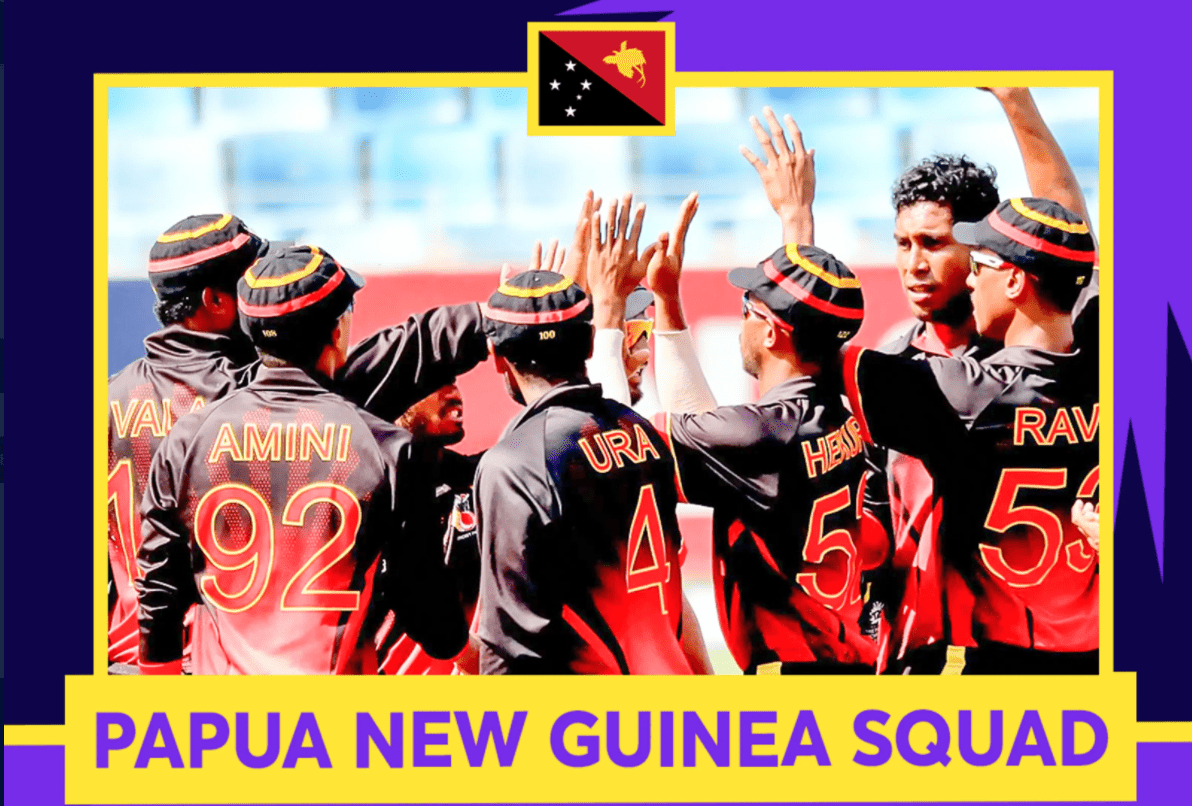
Fondly known as the Barramundis, team Papua New Guinea is no stranger to the T20WC scene. They've been on the fringes on multiple occasions, but here's an opportunity where they can capitalize.
Their captain, Assad Vala, is a robust batting allrounder who combines his hard-hitting at the top with some very useful offspin. They've also got a couple of other reliable all-round choices in Charles Amini and Norman Vanua, both of whom have played an array of ICC events just like their skipper.
Nosaina Pokana, the young left-arm seamer, is yet another player to keep an eye out for - he's known to be quite rapid and can be more than just a handful during the Powerplay. For a country where the popularity of the game is ever so gradually increasing, a standout performance in the qualifiers will do a world of good.
Roster:
Assad Vala (c)
Charles Amini
Simon Atai (wk)
Sese Bau
Kiplin Doriga (wk)
Jack Gardner
Hiri Hiri
Jason Kila
Kabua Morea
Nosaina Pokana
Damian Ravu
Lega Siaka
Chad Soper
Gaudi Toka
Tony Ura
Norman Vanua

Rounding off the Associate contingent are team Scotland. Similar to Ireland and Netherlands, they have a number of players that have varying degrees of experience in the English county circuit.
They've armed themselves well with spin choices: left-arm spinners Mark Watt and Hamza Tahir, and offspinner Michael Leask, who can smack a few lusty blows down the order.
Like the rest of the Associate teams, they shouldn't be underestimated and they are well and truly capable of creating a splash. Openers Calum MacLeod and George Munsey bring forth plenty of early firepower. Don't be too surprised if there are lots of close games in the Qualifiers, as there is lots of stiff competition present.
Roster:
Kyle Coetzer (c)
Richie Berrington
Dylan Budge
Matthew Cross (wk)
Josh Davey
Alasdair Evans
Chris Greaves
Michael Leask
Calum MacLeod
George Munsey
Safyaan Sharif
Hamza Tahir
Craig Wallace (wk)
Mark Watt
Brad Wheal
Reserves:
Michael Jones
Chris Sole

To say that the Proteas have had an eventful last two years would be a gross understatement. There have been plenty of ins and outs in the backroom staff as well as the appointment of a new shorter-formats captain: Temba Bavuma.
On the T20I side of things, South Africa have strung together three consecutive series wins: one in the Caribbean followed by one in Ireland and the third in Sri Lanka.
When the squad was announced, there was plenty of uproar regarding the exclusion of veteran batter and former skipper Faf du Plessis, as well as the experienced pace-bowling all-rounder Chris Morris. Fortunately, there are plenty of top-order options available and they'll look to bank on the experience of more than half of the squad to take them all the way.
The bowling looks fairly settled, with express pacer Anrich Nortje coming off a stellar IPL with Delhi as well as the current #1 T20I bowler in the world: left-arm wrist spinner Tabraiz Shamsi.
There are mild concerns over the middle order and death-overs impetus, and yes, bowling can't always win you games. But more importantly, the confidence level is relatively higher than it was earlier this year. It should be a cracking tournament for the South Africans, and there will be plenty to play for.
Aside from Shamsi, the improvement of Bjorn Fortuin and the rise of Keshav Maharaj across formats couldn't have happened at a more opportune juncture. The team is locked and loaded to rock and roll.
Roster:
Temba Bavuma (c)
Quinton de Kock (wk)
Bjorn Fortuin
Reeza Hendricks
Heinrich Klaasen (wk)
Keshav Maharaj
Aiden Markram
David Miller
Wiaan Mulder
Lungi Ngidi
Anrich Nortje
Dwaine Pretorius
Kagiso Rabada
Tabraiz Shamsi
Rassie van der Dussen
Reserves:
George Linde
Andile Phehlukwayo
Lizaad Williams
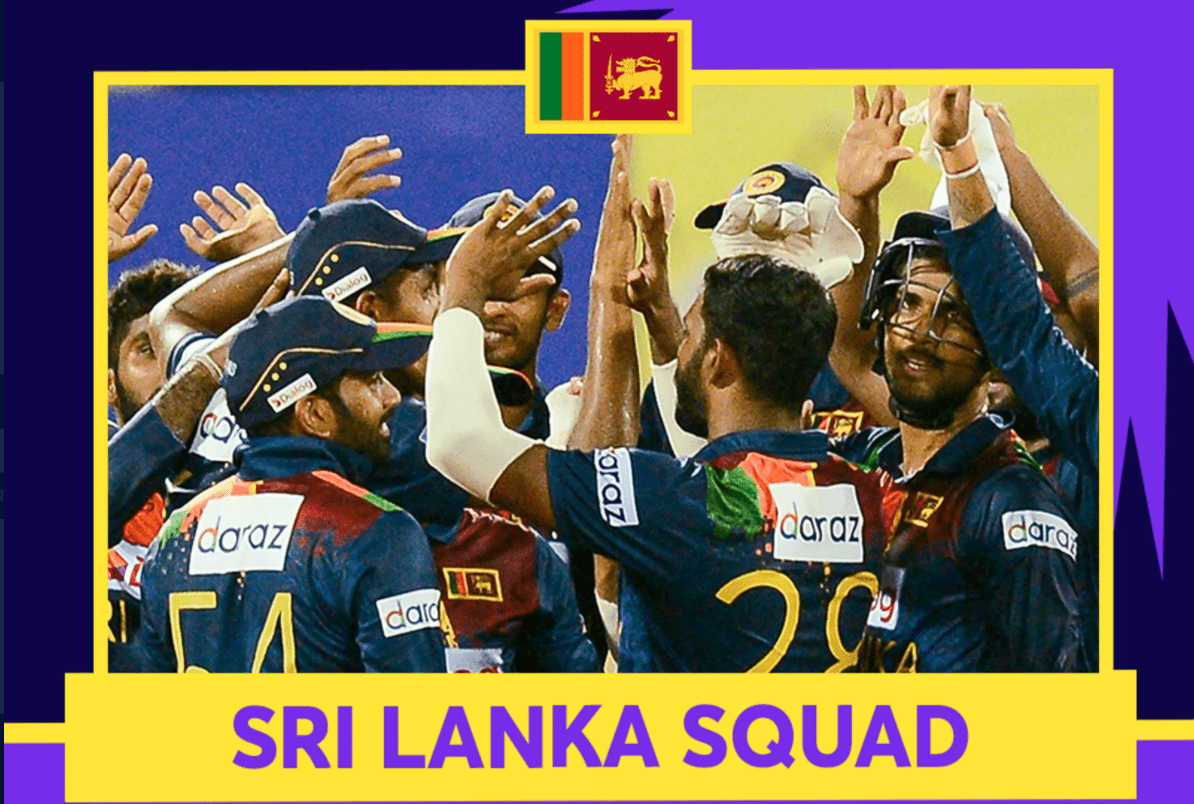
They won the tournament 7 years ago, but who would've thought that they would be in the Qualifiers this year? It's been a rather forgettable 2021 for the islanders, and the first thing on mind is to play positive all-round cricket and find a way to work their way back up the ranks.
First of all, they're without a couple of their more trusted batters over the last couple of years due to disciplinary breaches, and that's forced the selectors to hit the reset button. Fortunately, they've found a few talented spinners and all-round options, too.
But the guy to watch out for is undoubtedly Kusal Perera - out of the current batting unit, be is the one who's most likely going to change games with his approach.
All-rounder Chamika Karunaratne is another superb find, since they're in desperate need of a death-overs six-hitter. Compared to the 2016 squad, there are several new names, and expectations will understandably be relatively lower given the current situation.
With that being said, this could be the perfect scenario to elicit high-quality cricket from the Lankans. What we do know for sure is that the only way is up.
Roster:
Dasun Shanaka (c)
Dhananjaya de Silva
Charith Asalanka
Minod Bhanuka
Dinesh Chandimal (wk)
Dushmantha Chameera
Avishka Fernando
Wanindu Hasaranga
Chamika Karunaratne
Pathum Nissanka
Kusal Perera (wk)
Nuwan Pradeep
Bhanuka Rajapaksa
Maheesh Theekshana
Praveen Jayawickrama
Reserves:
Lahiru Kumara
Binura Fernando
Akila Dananjaya
Pulina Tharanga

Last, but of course not least, are the two-time champions: the West Indies. They've unearthed countless superstars over the years, and many of them know how to turn up in key moments. They'll be led in this tournament by one of the world's most renowned T20 hotshots, and they've called upon many of their experienced players that are on the twilight of their careers to give it one last hurrah.
All-rounder Dwayne Bravo is set to call it a day after this World Cup, Chris Gayle is readier than ever at 42 to do what he knows best, and Ravi Rampaul us back in a Windies shirt after a long layoff in the county setup.
Weirdly enough, Sunil Narine didn't get picked, despite his immaculate IPL returns, most recently in the eliminator against RCB. However, they have a very talented spinning all-rounder in Fabian Allen as well as many power hitters at their disposal.
Nicholas Pooran had a poor IPL with the Punjab Kings, but he's insistent that the general approach will not change, and it's for good reason. The Windies, statistically speaking, most frequently clear the boundaries compared to other teams.
Another interesting selection is the off-spinning all-rounder Roston Chase, who vaulted into the squad following an excellent CPL. Chase has never played a T20I, but here comes a moment to impress. This team has plenty of proven big-match players, and their eyes are always on the prize.
Roster:
Kieron Pollard (c)
Nicholas Pooran (wk)
Fabian Allen
Dwayne Bravo
Roston Chase
Andre Fletcher (wk)
Chris Gayle
Shimron Hetmyer
Evin Lewis
Obed McCoy
Ravi Rampaul
Andre Russell
Oshane Thomas
Hayden Walsh, Jr.
Reserves:
Jason Holder
Akeal Hosein
Sheldon Cottrell
Darren Bravo
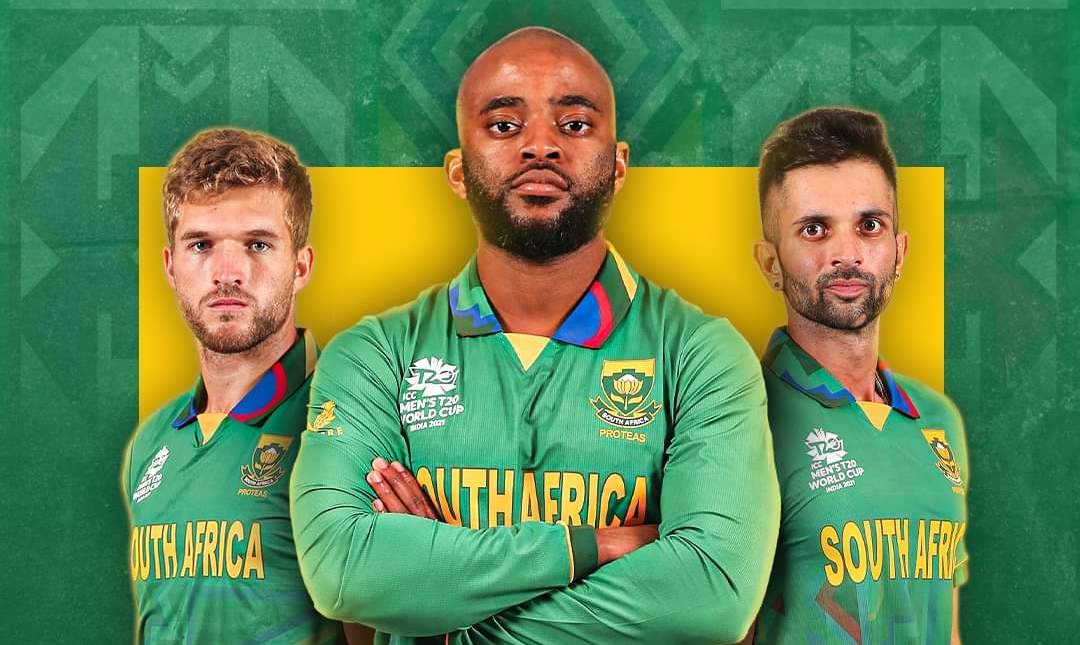
Q&A: Cricket Journalists' views on T20 World Cup
By Keanan Hemmonsbey
The Proteas start their T20 World Cup campaign on Tuesday 26 October against the West Indies at the Dubai International Stadium.
We spoke to cricket journalists in the industry to find what they expect from the Proteas in this world cup and how they would like to see them line-up.
Mpho Mutloane (1WSR)
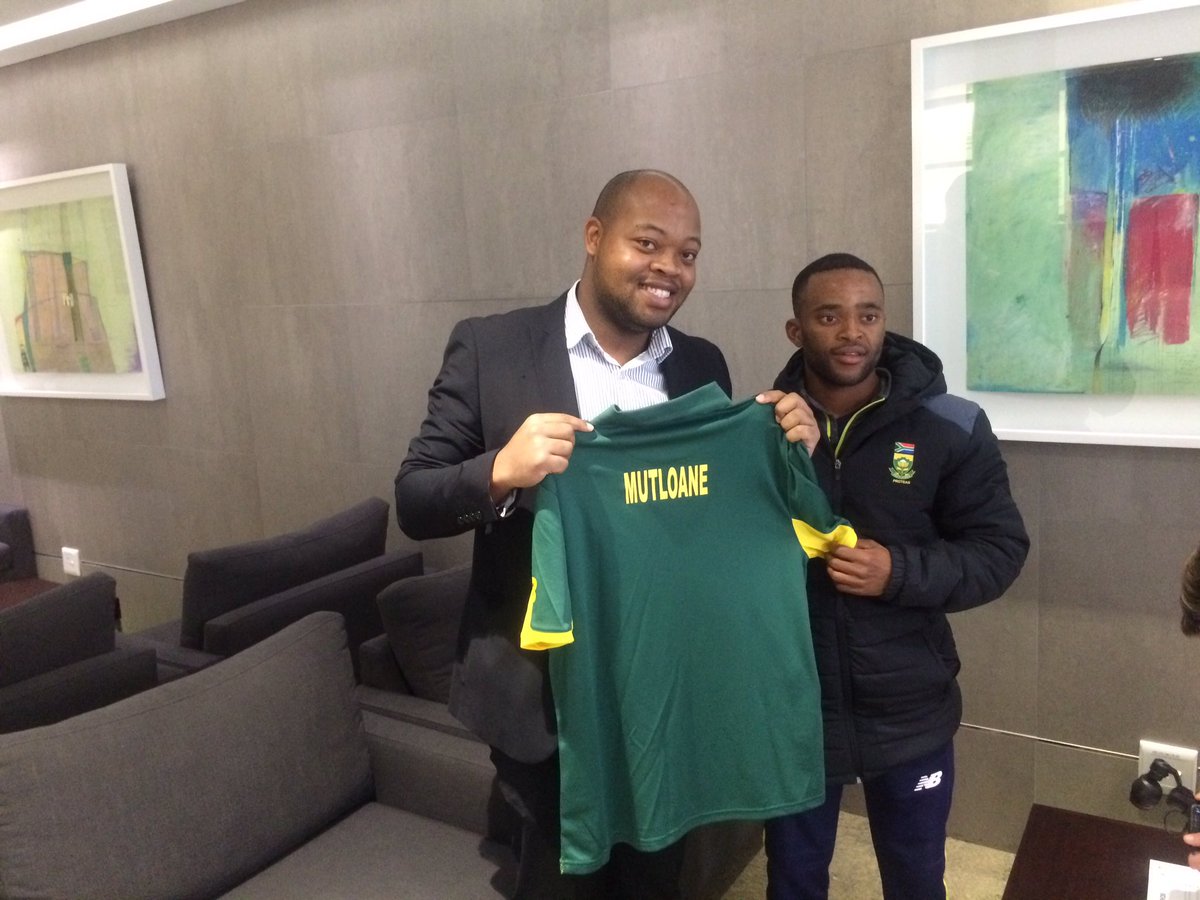
How do you think the Proteas should set-up for the World Cup regarding the playing 11 and balance of the team?Ideally I would like 5 batsmen 3 all-rounders and 3 bowlers but with our all rounders struggling with the bat I think a 6th batsman 1 all-rounder and 4 bowlers largely because our bowlers have shown to be able to deny opposition boundaries in the death overs.
What style of play do you want to see the Proteas adapting during the World Cup, that you think will provide them with the most success?
I’d like to see some aggression in the powerplay and aim for a boundary an over in the middle overs. From a bowling perspective, our spinners need to control the middle overs for us to win. South Africa will go far in this tournament based on how well the bowlers manage the middle overs.
Which section of our playing 11 are you most excited about?
Most Excited about our spinners and what they can do.
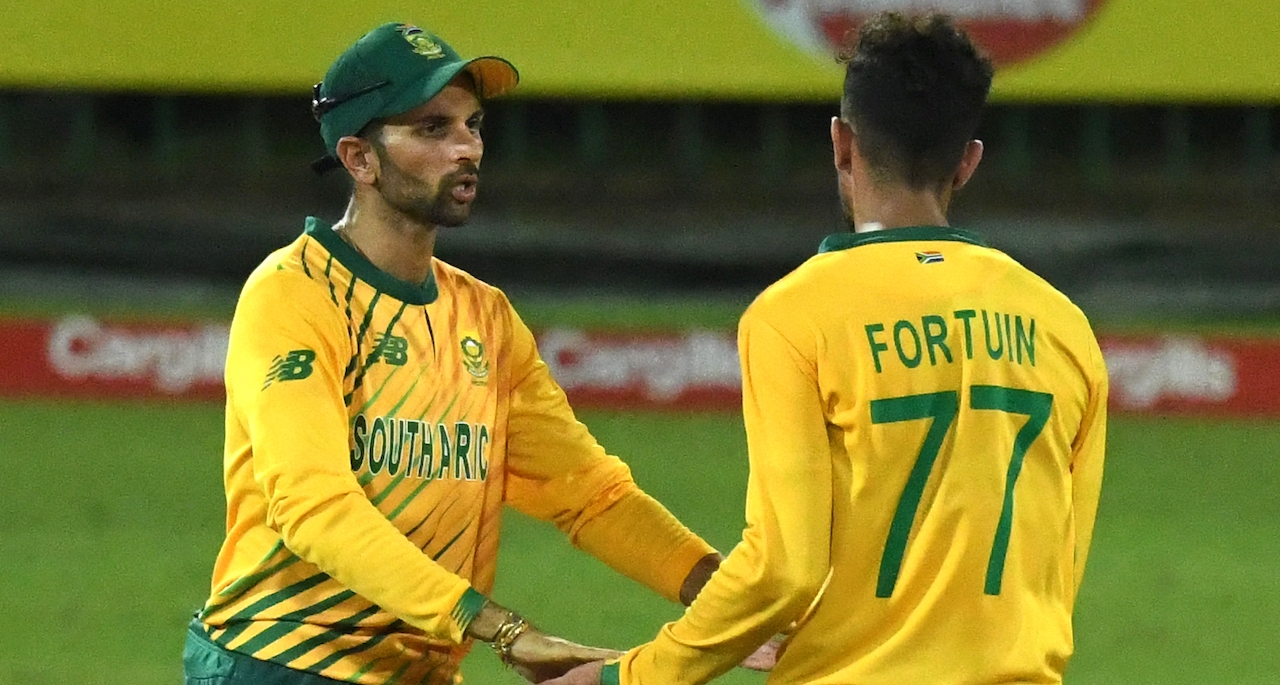
Which section of our playing 11 are you most worried about?
Most worried about our batting as to whether they can give us a great foundation to score big runs.
Is there anyone you believe is unlucky to have missed out on selection that could've added something the Proteas current squad is missing?
I think George Linde was unlucky to not be in the final 15 as the squad could use his batting and he would have helped the balance [of the team] better.
If you're brave enough, what's your ideal playing 11 for the first match?
1)De Kock 2) Bavuma 3) Markram 4) Van der Dussen 5) Miller 6) Klaasen 7) Pretorius 8) Maharaj 9) Rabada 10) Shamsi 11) Nortje.
What do you think would constitute a successful world cup campaign for the Proteas?
The Proteas must win their first 2 games against Australia and West Indies to give them a foot in the door for the semis. Those games will be won with the ball for SA and I hope they are fully prepared to take on both teams as they can beat both Australia. The bowlers will have to carry this team to the Semi-Finals
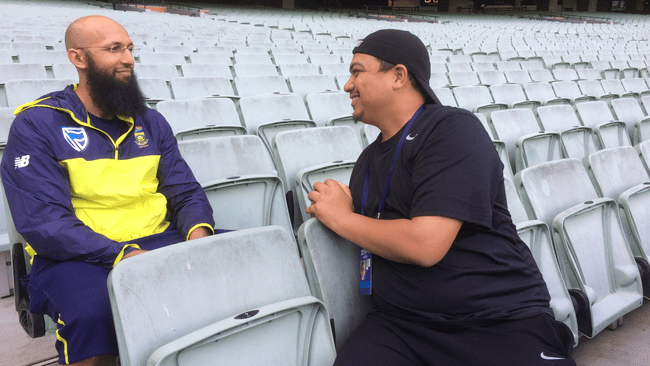
Zaahier Adams (IOL)
How do you think the Proteas should line up on the UAE pitches?
I think the conditions are going to determine that. We saw in the IPL how slow the surfaces were. We saw that obviously, spin will play a role. That’s gonna determine how they shape up. We saw in Sri Lanka they were quite keen to go with three spinners and that was quite refreshing to see that. They’ve got three specialist spinners and a 4th in the part-time of Aiden Markram. Depending on the conditions, it will be favourable if they go that way and they have shown that they are willing to do that.
Do you think the Proteas can emulate England’s successful white-ball style of play?
It’s a building process. The same way they approach their bowling it’s gonna be dependent on the conditions. I don’t think naturally that side [The Proteas] is suited to play like England. England are the benchmark in the way they play because they’ve got the players that are capable of doing that. I don’t think that side [South Africa] is set up to play like that. South Africa doesn’t have the all-rounders that they can bat 8, 9, 10 and just keep going from the outset.
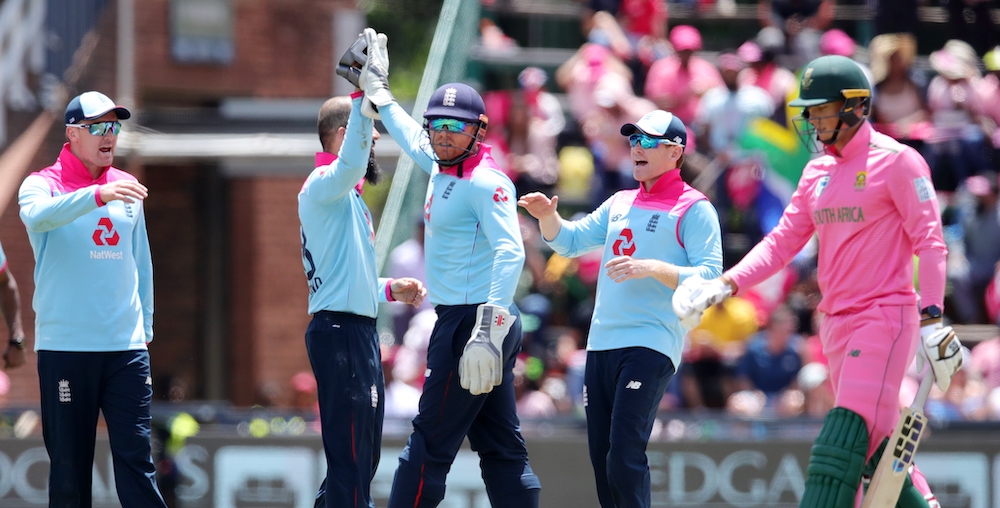
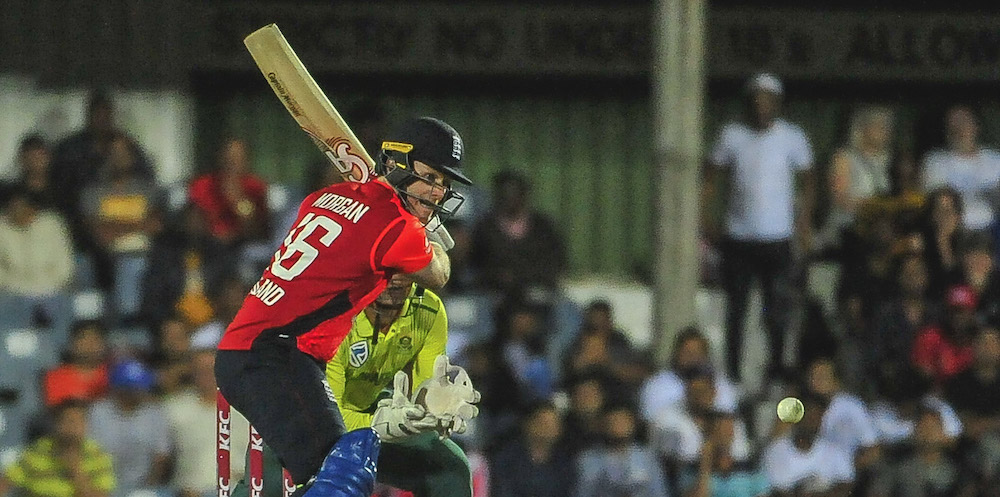
What style of play do you think the Proteas are going to deploy?
They’re gonna wanna be aggressive, they’re going to want to take on the powerplay particularly. They’re going to be a side that’s probably going to shape up and try and restrict teams to 140-160. That’s going to be how they’re going to look to restrict teams. And if they bowl second and then just pile on the pressure with the ball.
How do you think the Proteas should balance their team?
You look at the wicket in the morning, do you go with three spinners? Do you go with the extra seaming all-rounder? Is Temba Bavuma going to be fit? It’s not a straightforward question. I think it’s going to be very much condition dependant.

Tinus van Staden (Netwerk 24)
How do you think the Proteas line-up for the world cup?
I think the biggest question will be how are they going to squeeze four openers – Reeza Hendricks, Temba Bavuma, Quinton De Kock and Aiden Markram – into the top three? Or will they use those four batsmen as the top four then you open with Temba and Quinton? I think that’s the way they’ll open then maybe bat Reeza at 3, Aiden at 4. Rassie van der Dussen at 5 and David Miller at 6, I think that’s the one option. Then you have Dwaine Pretorius at 7 you also still have Wiaan Mulder that you can use, then you run into the bowlers. I think they will play Keshav Maharaj at 8 then Kagiso Rabada at 9 then probably they have to pick between Lungi and Anrich Nortje at 10 and then Tabraiz Shamsi at 11.
How do you think the Proteas should balance their team throughout the tournament?
I think it’s going to be interesting if they decide in a few games to go with three spinners and a fourth spinning option in Aiden Markram if they pick Maharaj, Shamsi and Bjorn Fortuin together. It’s going to be interesting to see if they leave one of the four aforementioned openers out and they go Temba, Quinton, Aiden, Rassie, Miller and then maybe go Dwaine Pretorius at 6 and then they can choose between Wiaan Mulder and Bjorn Fortuin at 7. Then you have a bit of a long tale which is also one of the big concerns I have.
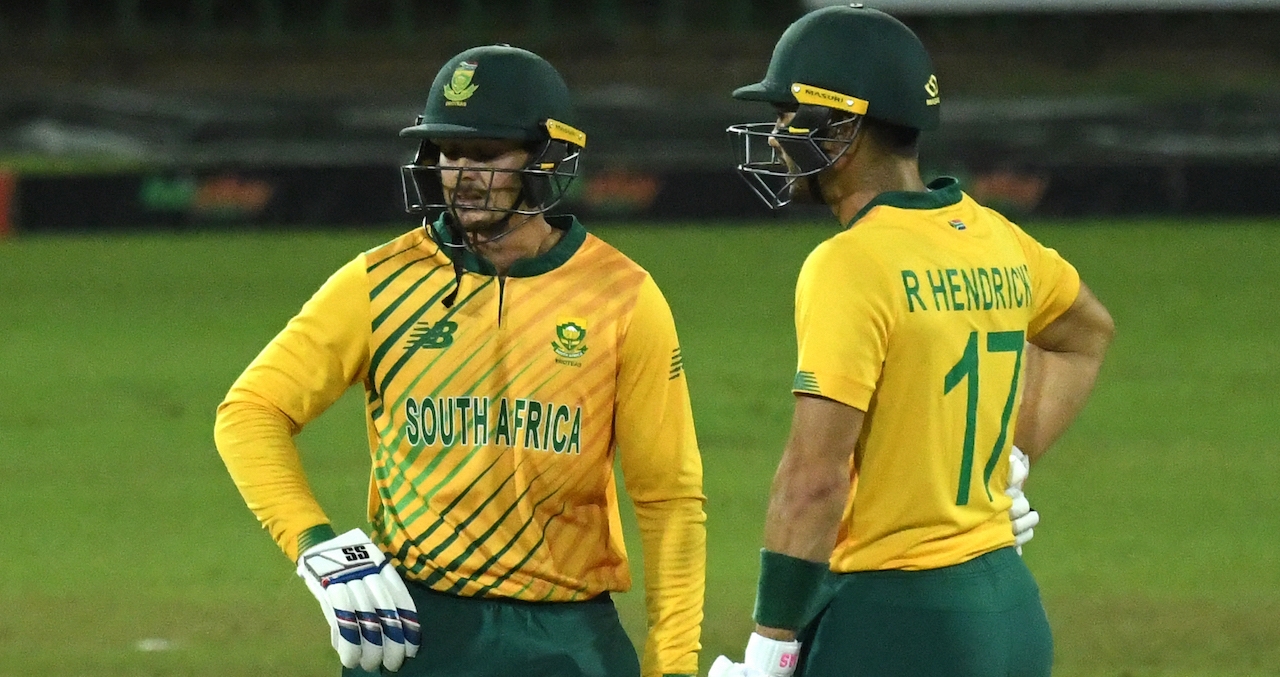
Do you think anyone was unlucky to miss out on the Proteas world cup squad?
If the combination was correct they would have been a bit better off with George Linde there because he can easily bat at 7 and he can give you four very very good overs.
Do you think the Proteas lower-order batters will be able to accelerate on the UAE pitches?
It’s going to be interesting to see how they adapt. Are they going to go with two all-rounders regularly in Mulder and Preterious? or will they trust Keshav Maharaj, Bjorn Fortuin and Kagiso Rabada to bat at 7, 8, 9 ? That will be interesting.
Do you think the Proteas playing style is conducive to a successful world cup campaign?
I think they actually did quite well, winning their last three T20 series so they’ll be full of confidence, they’ll believe that they have a good game plan, a good playing style.
Do you have any concerns about the Proteas squad?
My biggest concern is the batting and bowling in the death overs. They need to keep accelerating in the death with the bat, that’s something they struggled a bit with, especially against the West Indies.
They also did well in that facet a few times when they managed to keep wickets in hand. They don’t really have, except for David Miller, an out-and-out finisher. And then also with the ball, they need to be very very good at the death. I think it will be up to Kagiso Rabada and Anrich Nortje and when Lungi Ngidi plays to keep the runs down.

Firdose Moonda (ESPNCricinfo)
How do you think the Proteas should set-up for the world cup regarding the playing 11 and balance of the team?
The challenge for them is how to position the batters after the top three, with Rassie van der Dussen at No.4 and David Miller at No.5, there is the risk of the innings slowing down too soon and Miller not getting enough time in the middle. An option is to leave van der Dussen out, bat Miller higher, have Heinrich Klaasen in at No.6 and the seam-bowling allrounder at No.7 which allows enough room for two specialist spinners and two quick.
What style of play do you want to see the Proteas adapting during the world cup, that you think will provide them with the most success?
As was the case in Sri Lanka, South Africa has to be open to the idea that they could play all three specialist spinners if conditions call for it. Flexibility in the batting approach will also be key.
Which section of our playing 11 are you most excited about?
The opening partnership. Whether it's Quinton de Kock and Temba Bavuma or Quinton de Kock and Reeza Hendricks, South Africa's firepower is going to come from this combination in the Powerplay. If Bavuma is fully fit, this is a big opportunity for him to establish himself as an undisputed leader at this level.
Which section of our playing 11 are you most worried about?
Death-bowling. South Africa don't seem to designate this responsibility to anyone yet and none of Kagiso Rabada, Lungi Ngidi or Anrich Nortje have good recent records in this department.
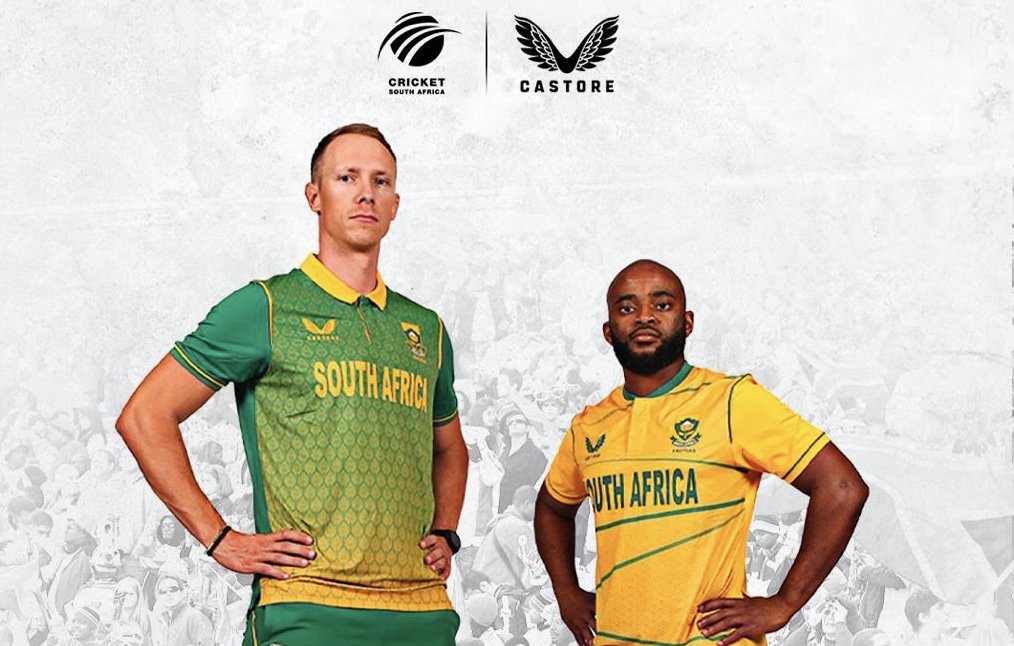

Dan Weston: Taking a closer look at the numbers
Dan Weston didn't have much talent in cricket, but has always been numbers inclined.
So after years of working as an accountant, he became a professional gambler, before he decided to have a look at cricket using numbers.
Now he is a recruitment specialist and helps teams with strategy.
Dan currently works with Birmingham Phoenix and Leicestershire CCC.
Offside Maidens
Daily Show | Let's talk about it
Video Playlist
The Podcast Live Show:
Exclusive Interviews
Crossword Puzzle
T20 World Cup Captains!
ISSUE 15: Crossword Answers
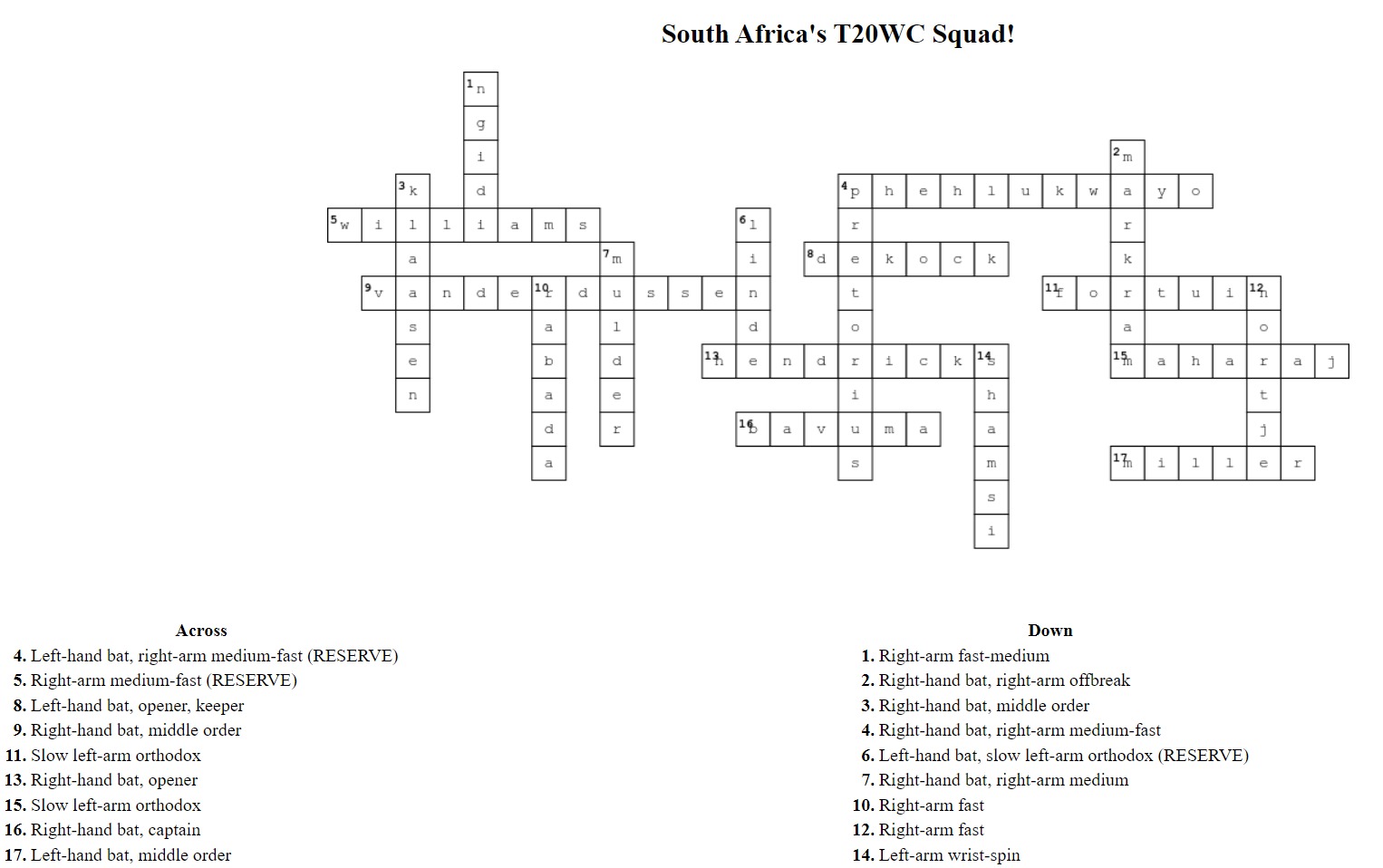

Magazine info
Editorial Director
Khalid Mohidin
IT and Technical Director
Faizel Mohidin
Contributors
Abhai Sawkar
Aditya Mehta
Aaron Viles
Chris Chiwanza
Emily Norris
Jessica October
Janine October
Keanan Hemmonsbey
Khalid Mohidin
Licia Woods
Marc Jacobson
Nasri Alexander
Tara-Lee Essack
Graphics
Khalid Mohidin (Cover and Graphics)
Mohammed Hoosain (CFM logo)
Images
BackpagePix
CSA (Bjorn Fortuin Header)
Getty Images
ICC
IPL
Supplied
Twitter
Facebook
Video Binge List:
On Lockdown Series
The Podcast Show
Legends with Ravi
Daily Show